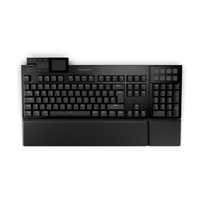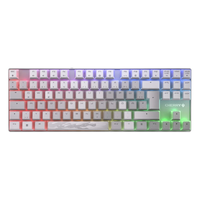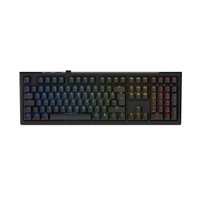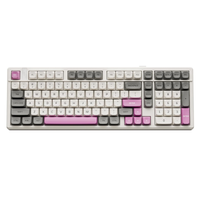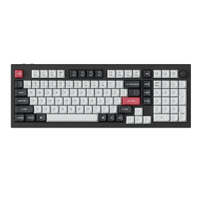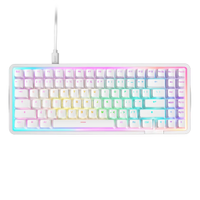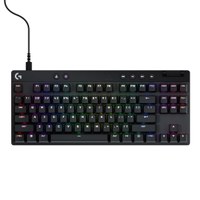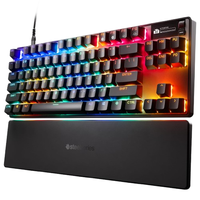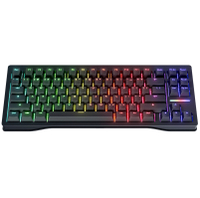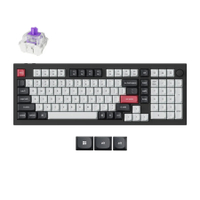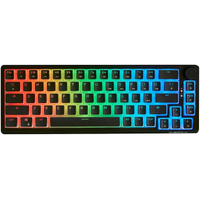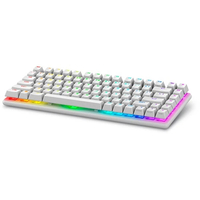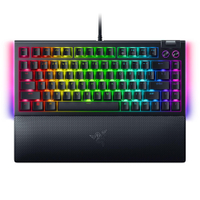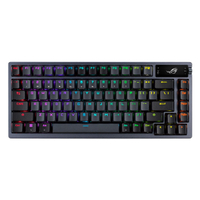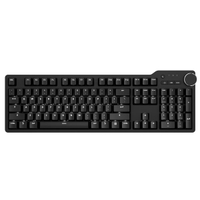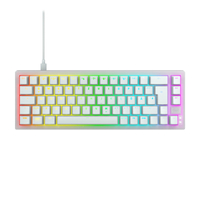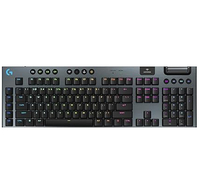Best gaming keyboards in 2025: the fastest, smoothest and loveliest boards I've tested
The best gaming keyboards have it all: style, ergonomics, and of course, the most satisfying clickity clacks.
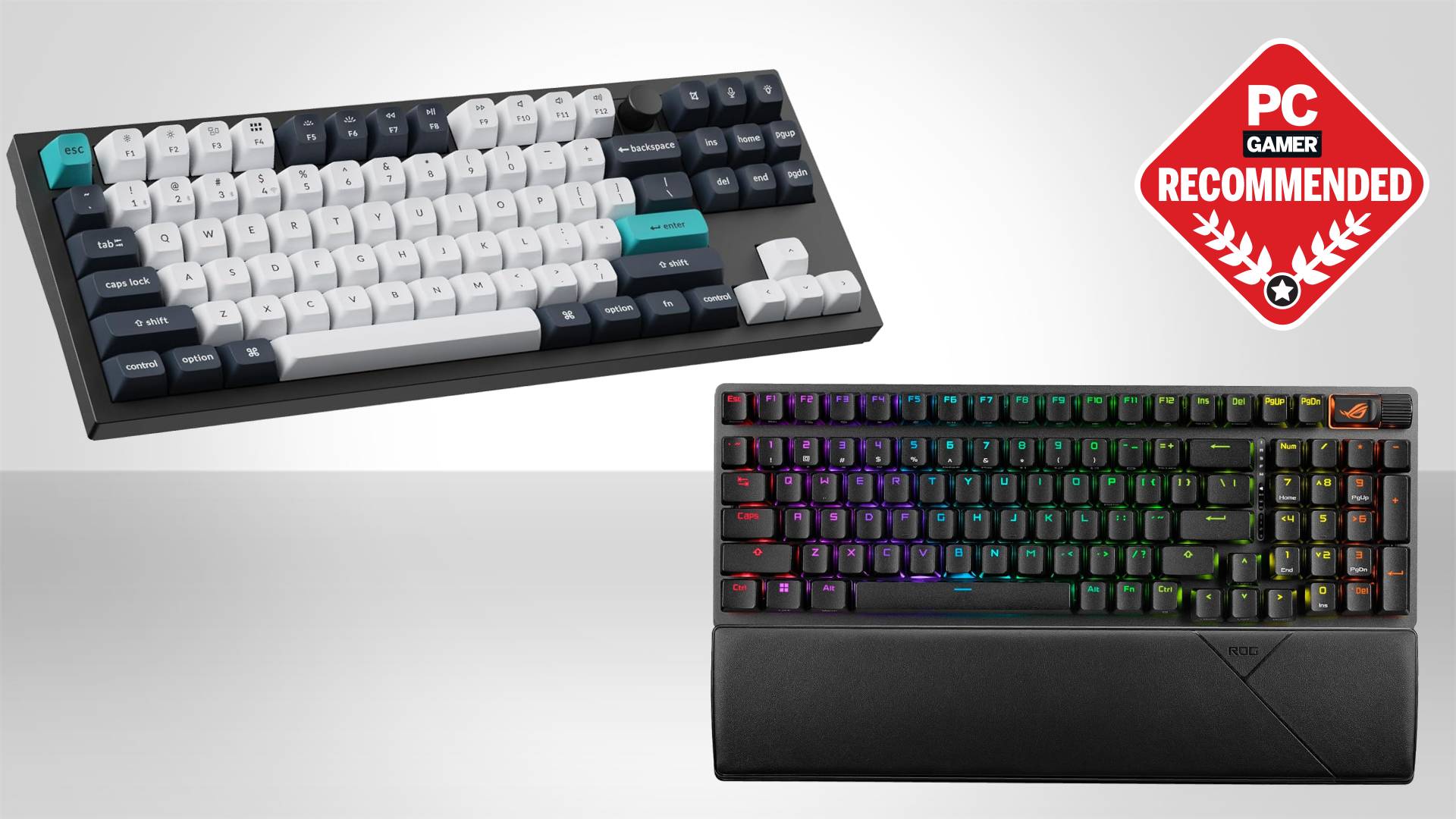
When searching for the best gaming keyboard, we keep an eye out for features, feel, and value for money. Each of the gaming keyboards in this guide delivers on these three points, though we've focused on various price points to cater to any sort of budget.
The best gaming keyboard right now is the Asus ROG Strix Scope II 96 Wireless. It excels in every aspect—superb mechanical feel and a full-size yet compact design. But if you want to go for something cheaper, we've been blown away by the Gamakay X NaughShark NS68, which is the new best budget gaming keyboard, thanks to the Mountain Everest 60 becoming harder and harder to buy.
One vital aspect of any gaming keyboard purchase is whether to pick a mechanical keyboard. Generally, we'd say it's always worthwhile considering a mechanical switch over a membrane one. They feel much better for typing and gaming, and they're generally quicker. Nowadays, we're seeing more and more specialised switches, such as Hall effect, optical, and even induction, which are becoming great picks for competitive gamers due to features like rapid trigger.
June 19, 2025: With the Mountain Everest 60 becoming harder and harder to find, the Gamakay x NaughShark NS68 has been crowned the best budget gaming keyboard, and for good reason. You are getting some nice keycaps and Hall effect switches at a very reasonable price.
May 1, 2025: We have crowned the Be Quiet! Light Mount as the best silent keyboard, and for good reason. It helps that it's great in other areas and reasonably priced, too. As well as this, we have added a handful of new keyboards to our also tested section, including another Be Quiet! keeb that, whilst great, doesn't quite make the list.
March 19, 2025: Added the Wooting 80HE as the best rapid trigger gaming keyboard, largely thanks to its stellar software and easy-switch profiles. We've placed the Keychron K2 HE as the best wireless rapid trigger because it's definitely worth a look if you can't stretch your budget to the 80HE. We also removed a couple of picks that are no longer worthwhile and added a few to the Also Tested section.
The quick list

The best overall
The Strix Scope II 96 may have a ridiculous name, but it's still a dream to game and type on. Silky smooth switches and clever media keys make this the best gaming keyboard right now.

The best budget
With incredibly responsive Hall effect switches, PBT keycaps, and, of course, a very reasonable price, Gamakay has absolutely knocked this keyboard out of the park. It also has rapid trigger, which is practically unheard of at its cost.
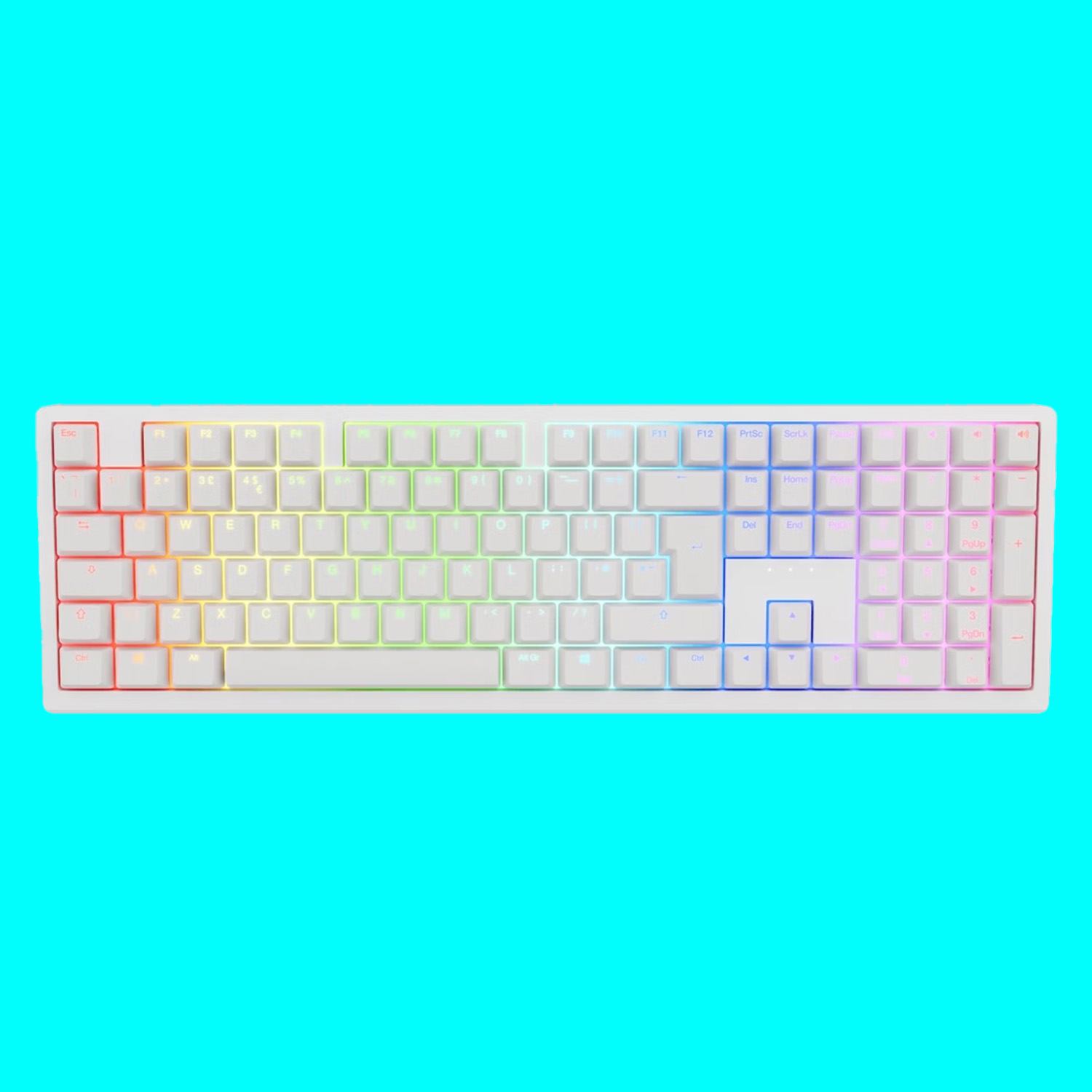
The best mid-range
Gaming keyboards are soaring in price these days, but not all. We have a few budget picks in this guide, though for just a little more, you can score this fantastic Ducky. It's mechanical, lit up like the Fourth of July, and extremely sturdy.

The best rapid trigger
Wooting's been doing Hall effect before Hall effect was cool, and it's come close to perfecting it here with the 80HE. That's primarily thanks to the easy-to-use software and profiles, but it's not bad to type on, either.

The best wireless rapid trigger
This keyboard not only delivers on the best that Hall effect tech and rapid trigger functionality have to offer, but it puts it in a rather dashing wireless package that feels and sounds great to type on, too.
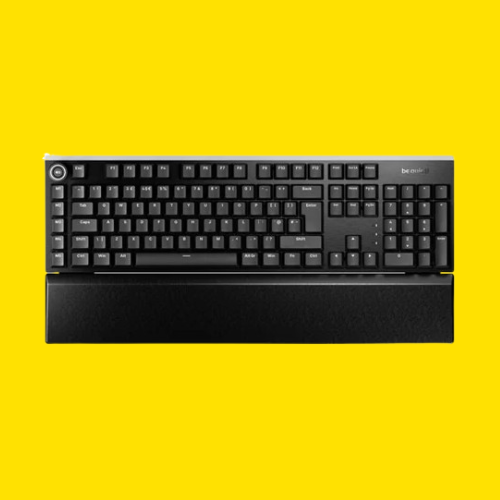
The best silent
If you find yourself gaming in a space with others, or just don't like a clacky keeb, the Light Mount is the quietest and most functional keyboard we've had the pleasure of using.
⬇️ Click to load more of the best gaming keyboards ⬇️

The best tenkeyless
With a superb build quality and delectable typing feel (seriously, that's not hyperbole), the Keychron Q3 Max is easily the most drool-worthy tenkeyless (TKL) keyboard we've tested.

The best low profile
Fast, compact, Hall effect and affordable. Yep, the NuPhy Air60 HE has it all, including rapid trigger support and excellent software. And it's super low profile, to boot.

The best ergonomic
If you want to prioritise your health and posture while typing, you'd better opt for an ergo board. Luckily, that doesn't mean sacrificing any important gaming features, thanks to the Kinesis Freestyle Edge RGB's blend of both.
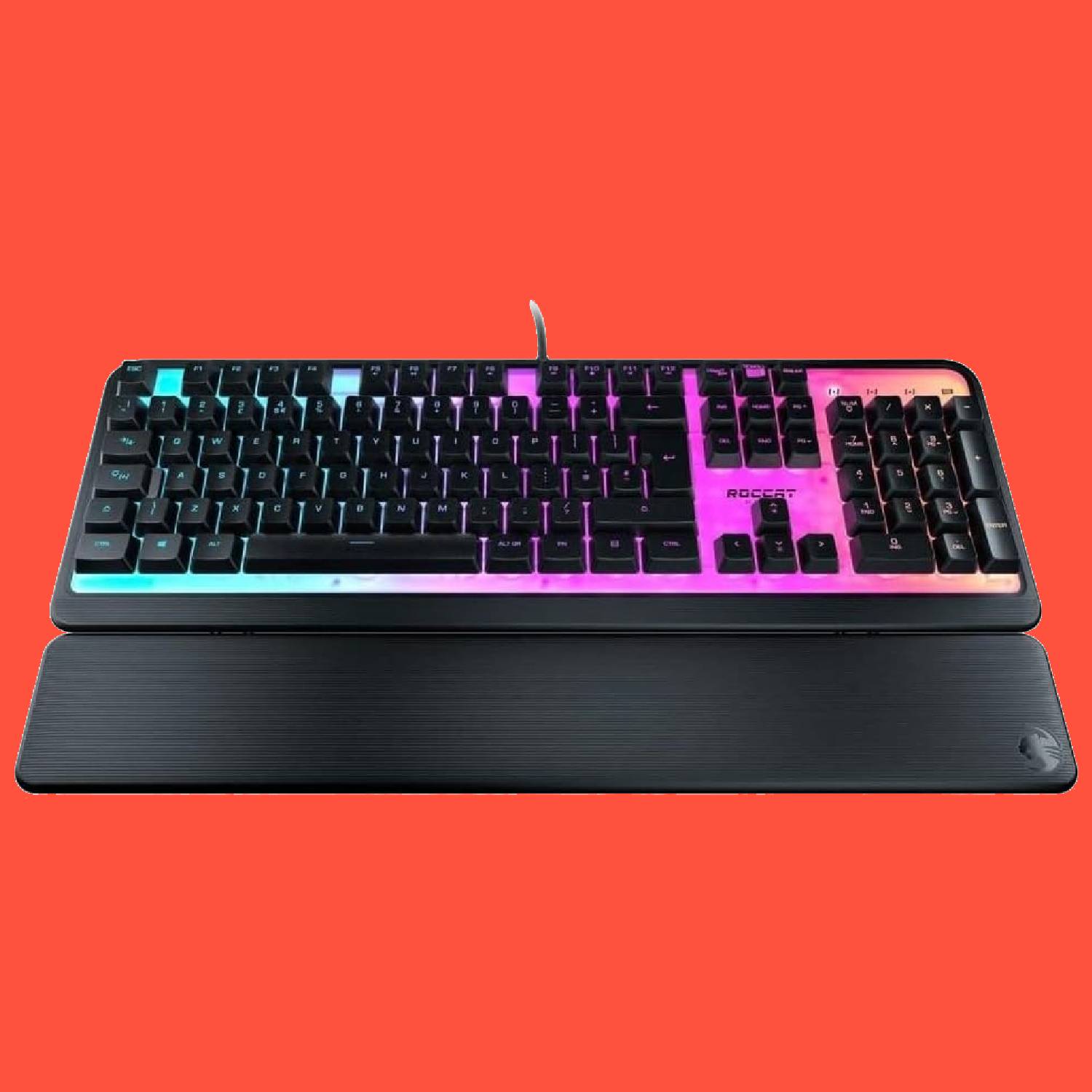
The best membrane
If instead of a mechanical board, you prefer the squishy flaoom of a membrane, this is for you. It's an eye-catching, surprisingly tactile membrane keyboard that doesn't break the bank.

There are few keyboard enthusiasts as enthusiastic as our Jacob. He's been professionally testing for many years now, and has been collecting mechanical key switches like Smaug hoarded gold for years before that. Whether it's Hall effect or straight mechanical, he's poked and prodded more keyboards and switches than any one man should, and is our expert on all things keeb.
The best gaming keyboard
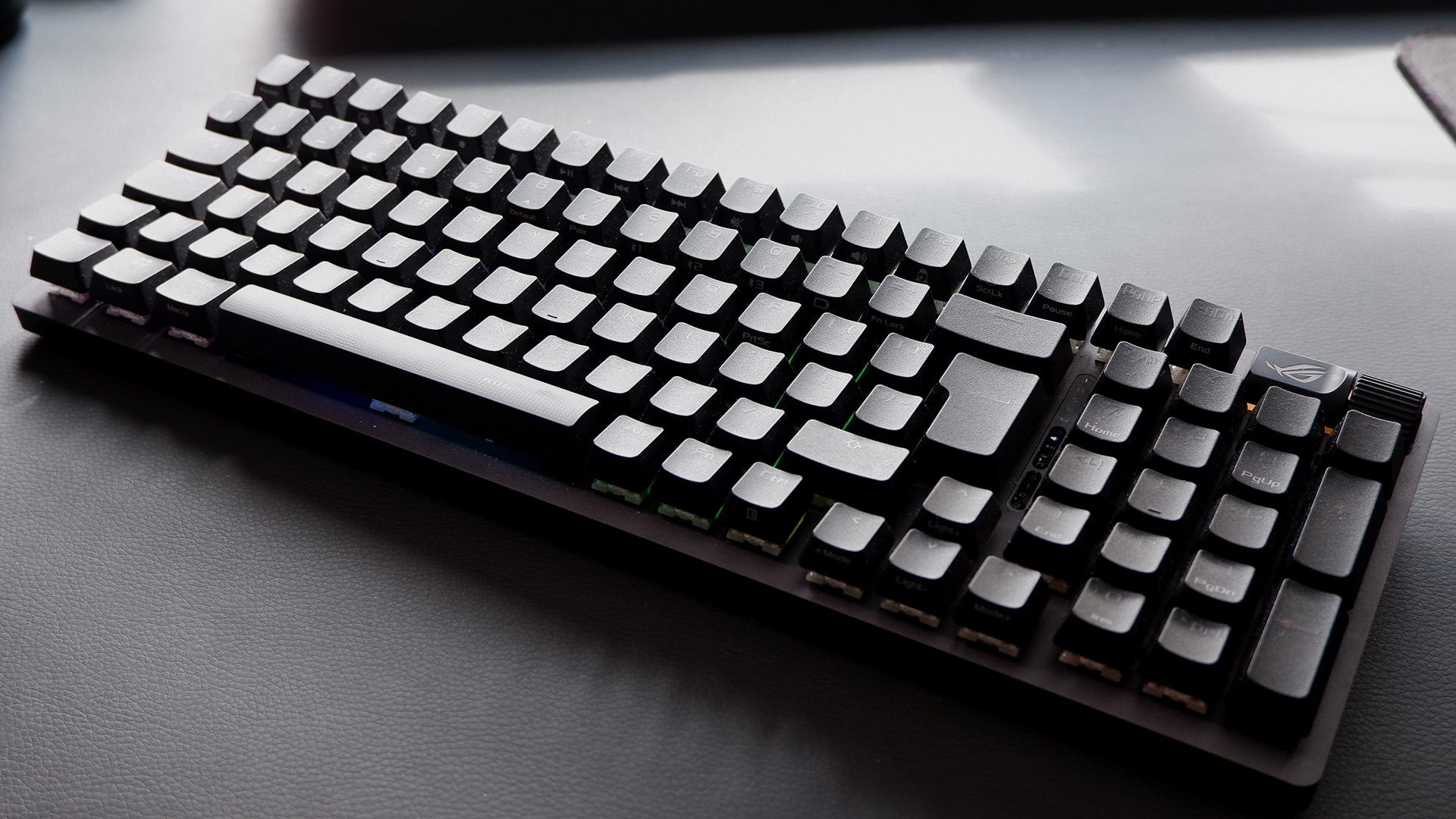
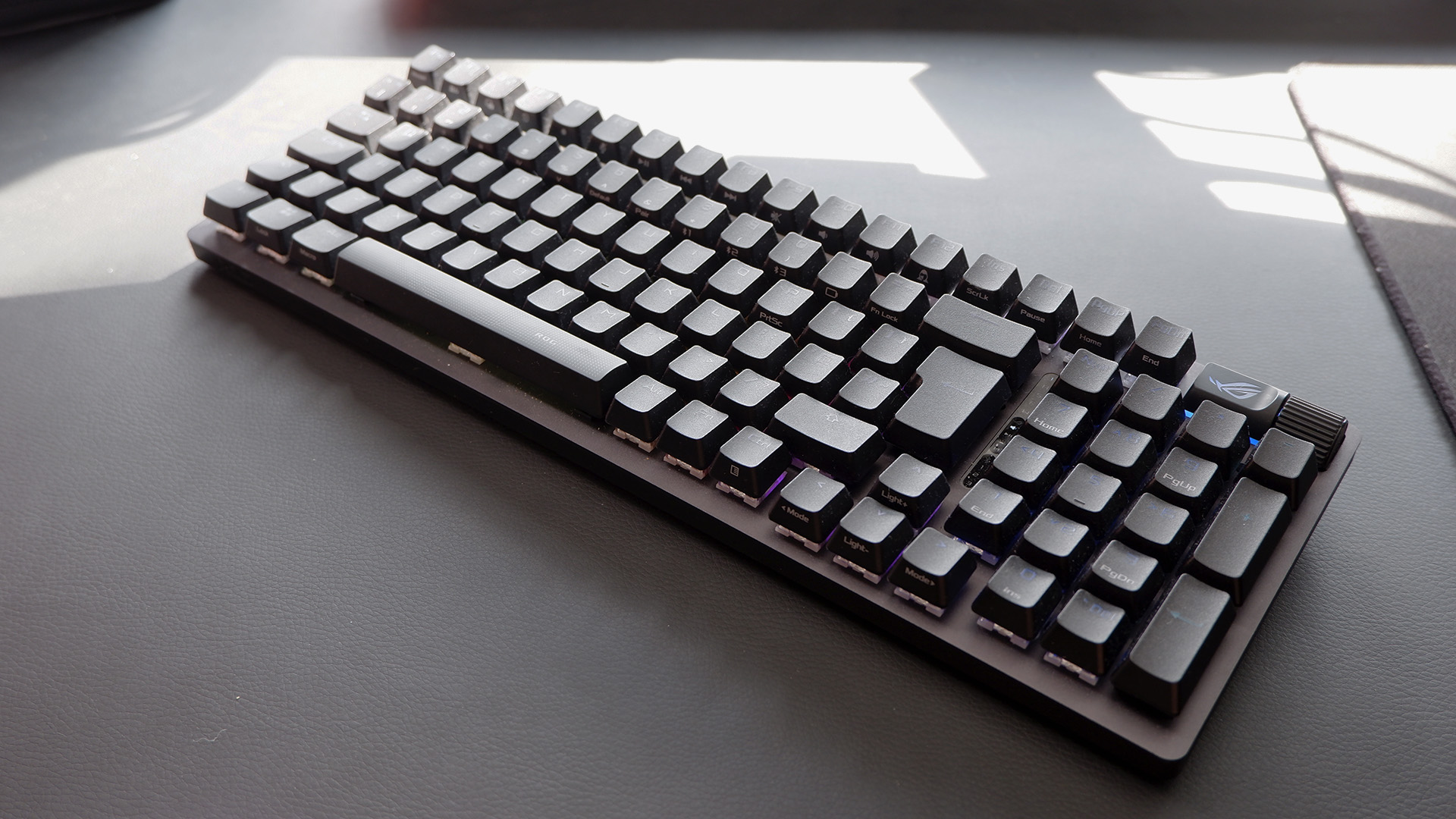

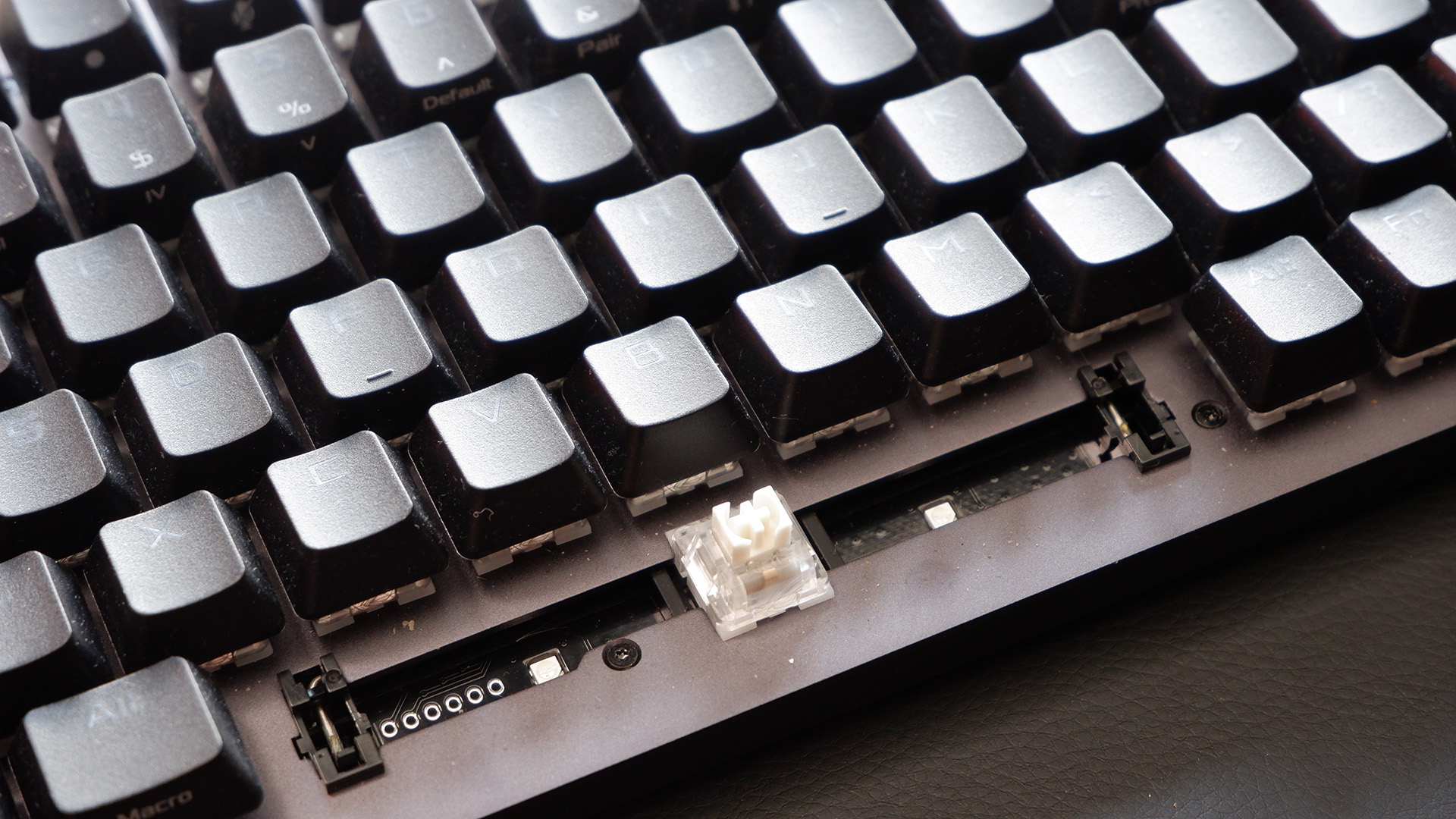
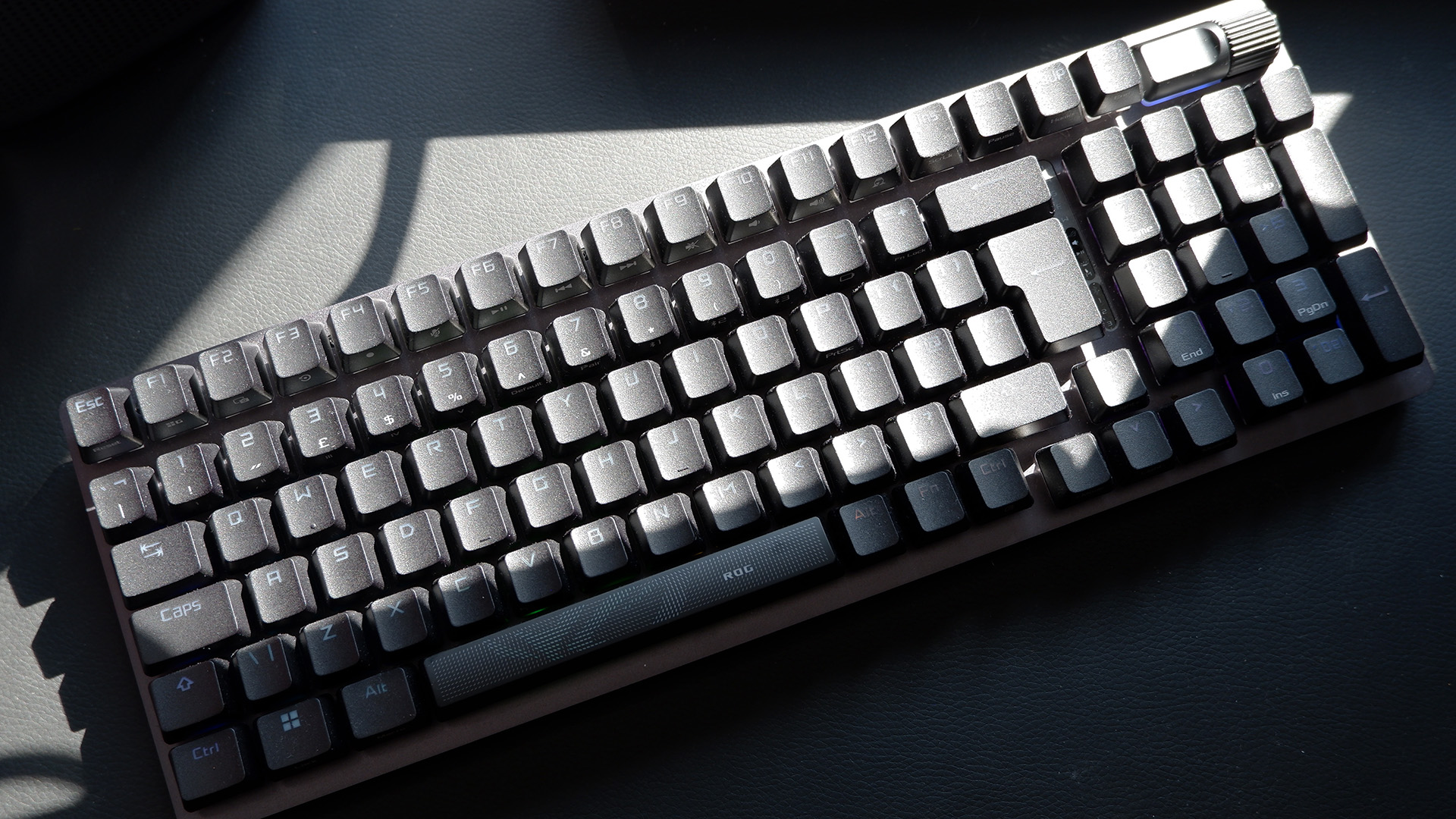

Specifications
Reasons to buy
Reasons to avoid
✅ You want the smoothest typing experience: With lubed switches out of the box, you don't need to waste any energy with a pot of lube and a paintbrush in order to get an immaculate typing experience.
✅ You want the best generalist gaming keyboard: You can find faster keyboards, and definitely flashier ones, but the ROG Strix Scope II 96 is by far the best generalist board and excels at a lot.
❌ You want speed or analog features: As fast as most other mechanical keyboards, nowadays, you can find faster keyboards than this using Hall effect or optical switches.
The best gaming keyboard is the Asus ROG Strix Scope II 96 Wireless. It's rare that a keyboard is such an all-around joy to use as this is. There are faster, smarter, even cheaper boards—you'll find all of those recommendations below—but the Strix Scope II 96 Wireless brings together many of the features we're looking for in a modern gaming keyboard.
Firstly, some of the smoothest mechanical switches in the biz. You can pick between ROG-branded NX Snow or NX Storm switches in this board. I've been using the Snow switches, which are your regular linear dealio with an actuation force of 45 g, though the Storm switches are a moderately heavier tactile option. These switches alone aren't anything special, but a little lube goes a long way.
A drop of lube on every mechanical key switch makes a surprising amount of difference to the typing experience. Each keypress is smooth, consistent, and every thwack produces a glorious clack. This lube is already pre-applied to each switch, which saves you the hassle of opening each one and applying it yourself. We've done that before, and it can get messy.
Both of the available switches actuate at 1.8mm, which is pretty snappy, though not quite as snappy as the Corsair K70 Max at its lowest adjustable actuation point of 0.4 mm. Similarly, the Strix Scope's polling rate is a mere 1000 Hz—slower than the K70 Max at 8000 Hz. Not that I noticed that in-game—the Scope II 96 feels extremely responsive.
It's also relatively quiet. The sound of the linear switches has been reduced to a light pitter-patter by the sound-dampening foam, sturdy PBT plastic keycaps, and switch pads. Lubed-up, sturdy stabilisers also keep the larger keys, namely the spacebar, quiet.
You are able to swap out any of the NX Snow switches on this keyboard for keys of your choosing. However, if you don't replace them with lubed switches, I will personally hunt you down. Don't do the Scope II dirty like that.
The Scope II 96 is nearly a full-size board—it importantly retains a full numpad—though it's been squished down into a more compact chassis. As a result, the delete key is further away from your pinky than normal. It takes some getting used to, but I've been tapping away on it for a couple of weeks now, and I feel I've got typing on the Scope II 96 down to a fine art.
Still, it's been a long time since I've been blown away by a gaming keyboard—so many seemed carbon copies of what Corsair did 10 years ago—but the Scope II 96 is mighty impressive. It focuses on nailing the actual mechanics of a mechanical gaming keyboard. Importantly, it's also great for gaming and doesn't cost anywhere near as much as its smaller, more premium sibling, the ROG Azoth.
Read our full Asus ROG Strix Scope II 96 Wireless review.
The best budget gaming keyboard
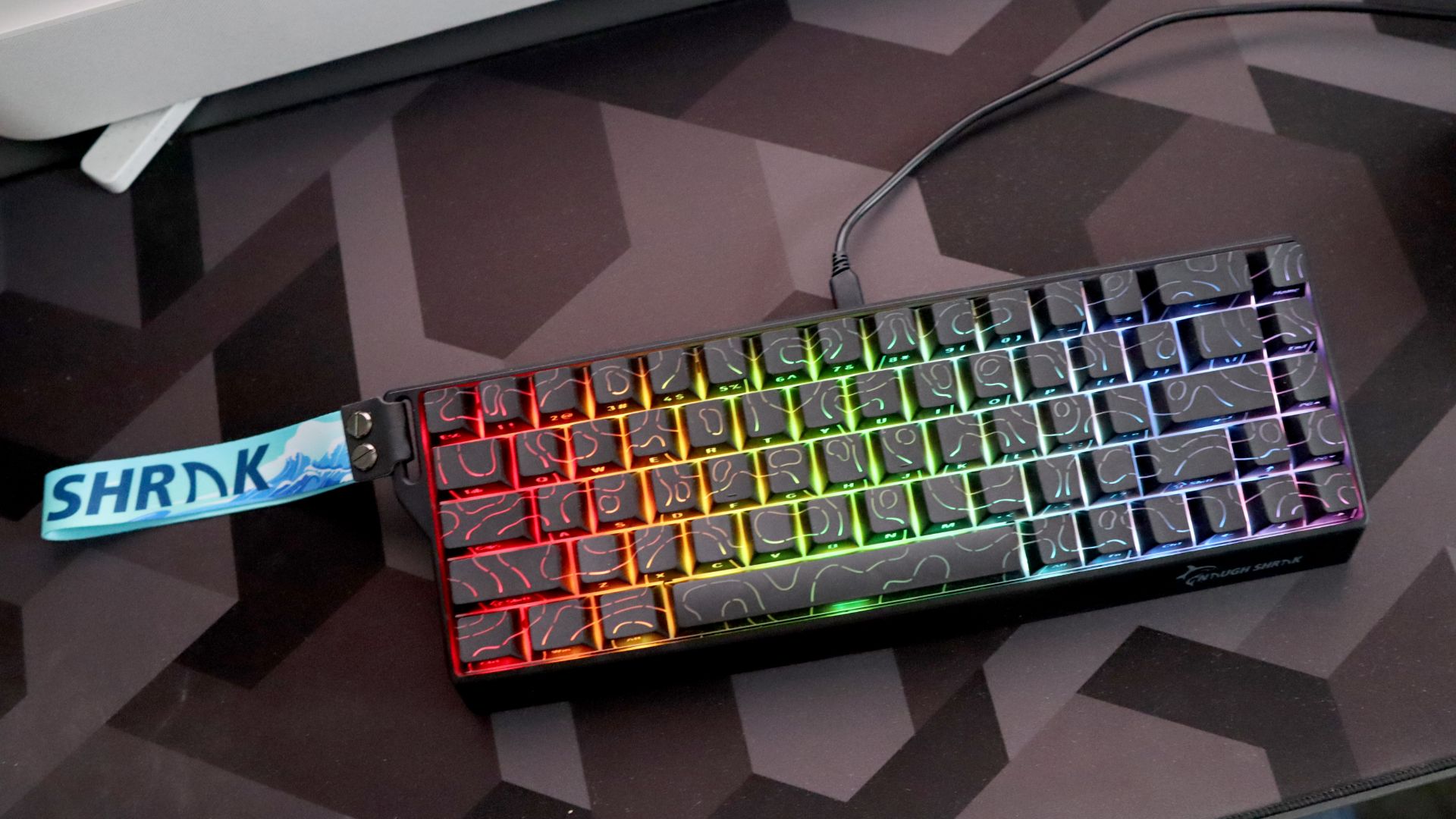
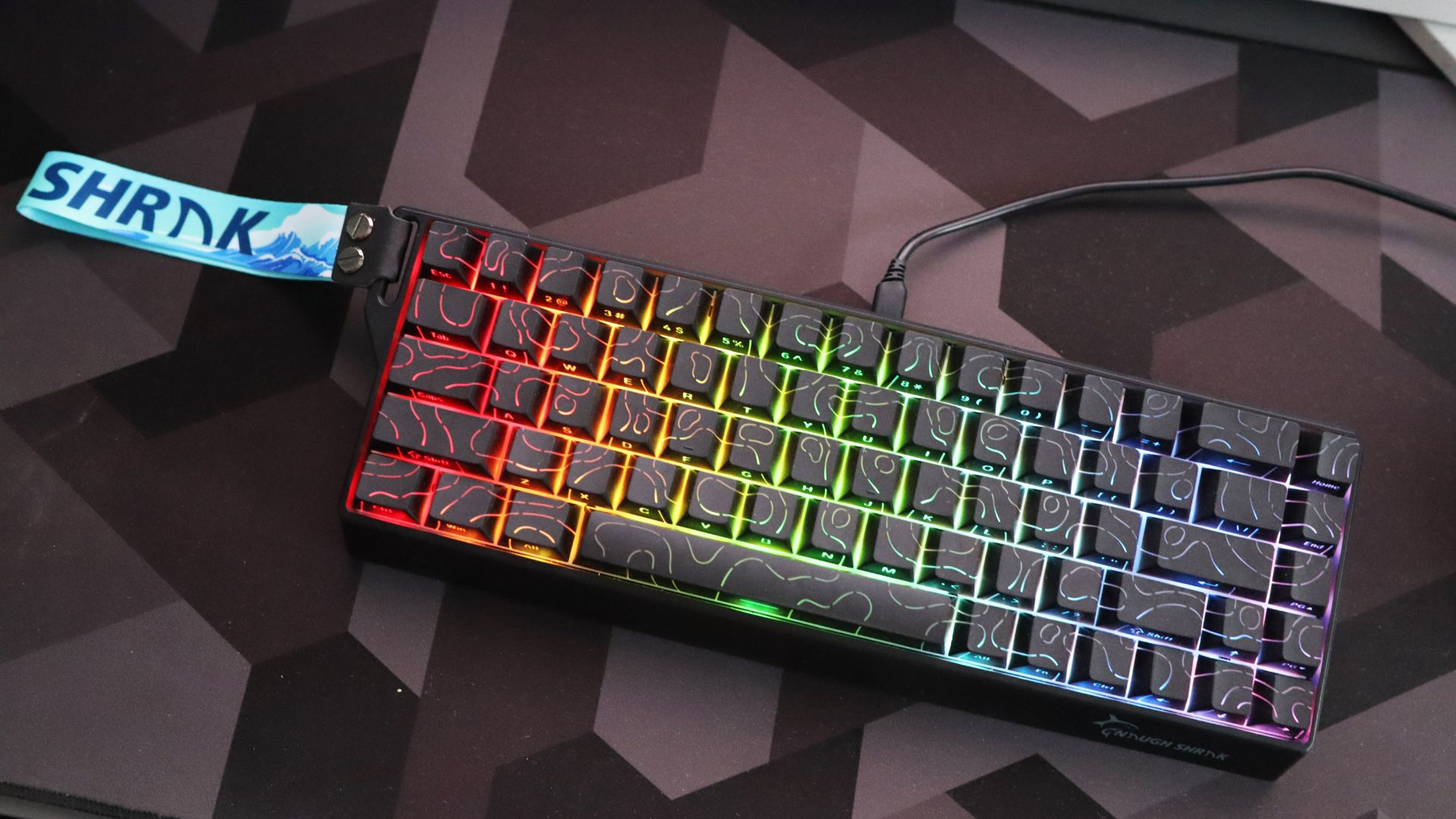
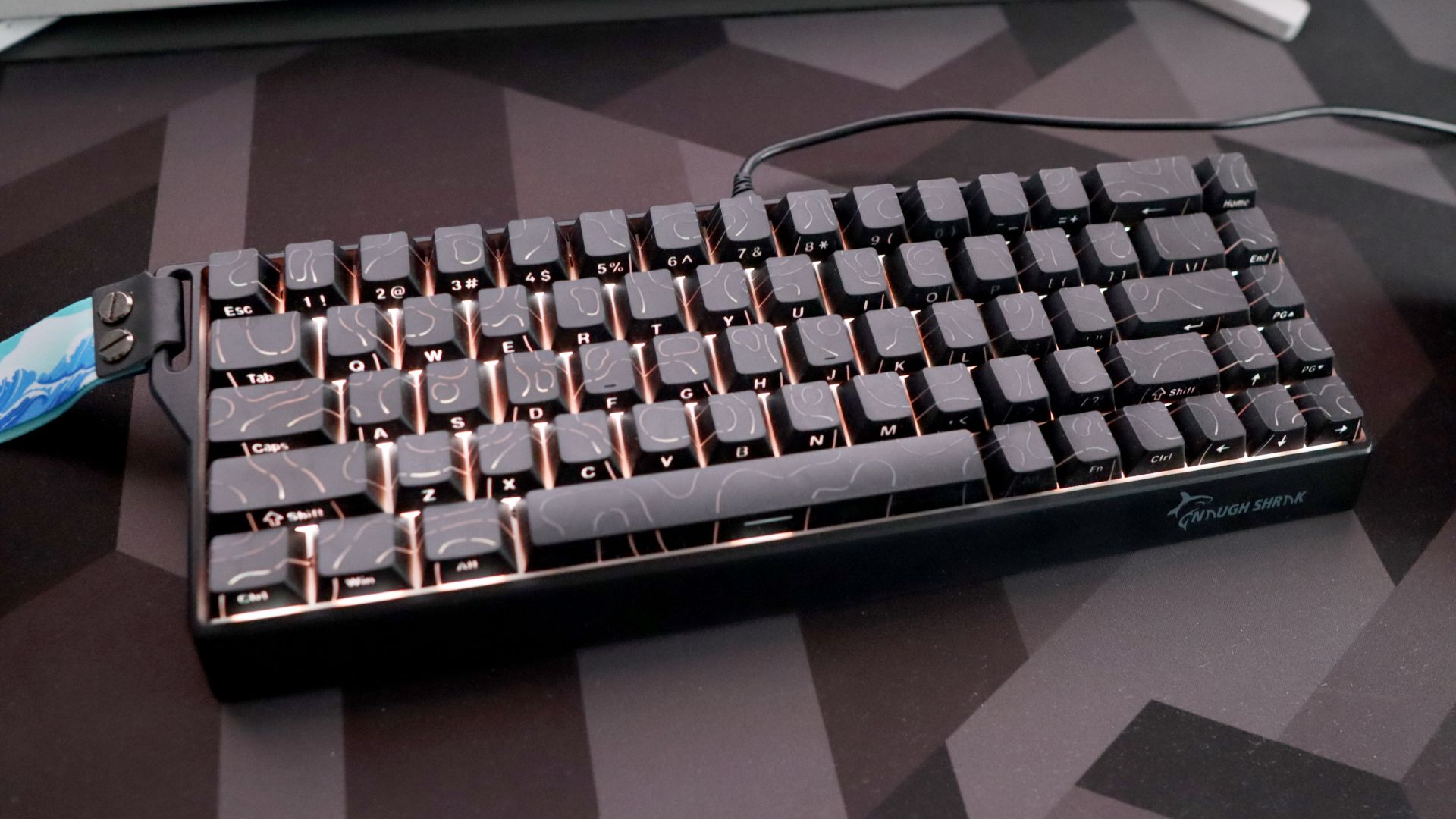
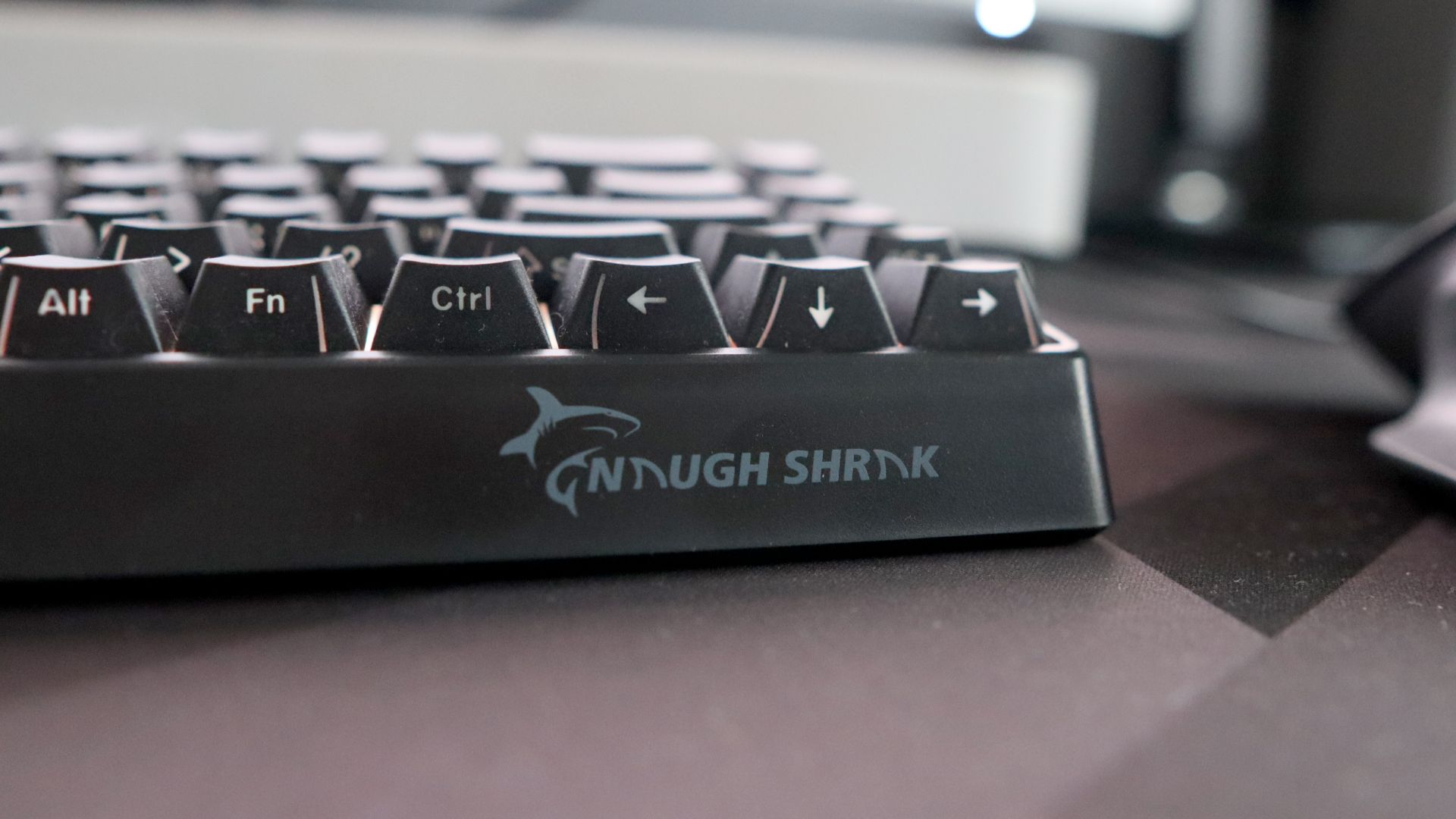
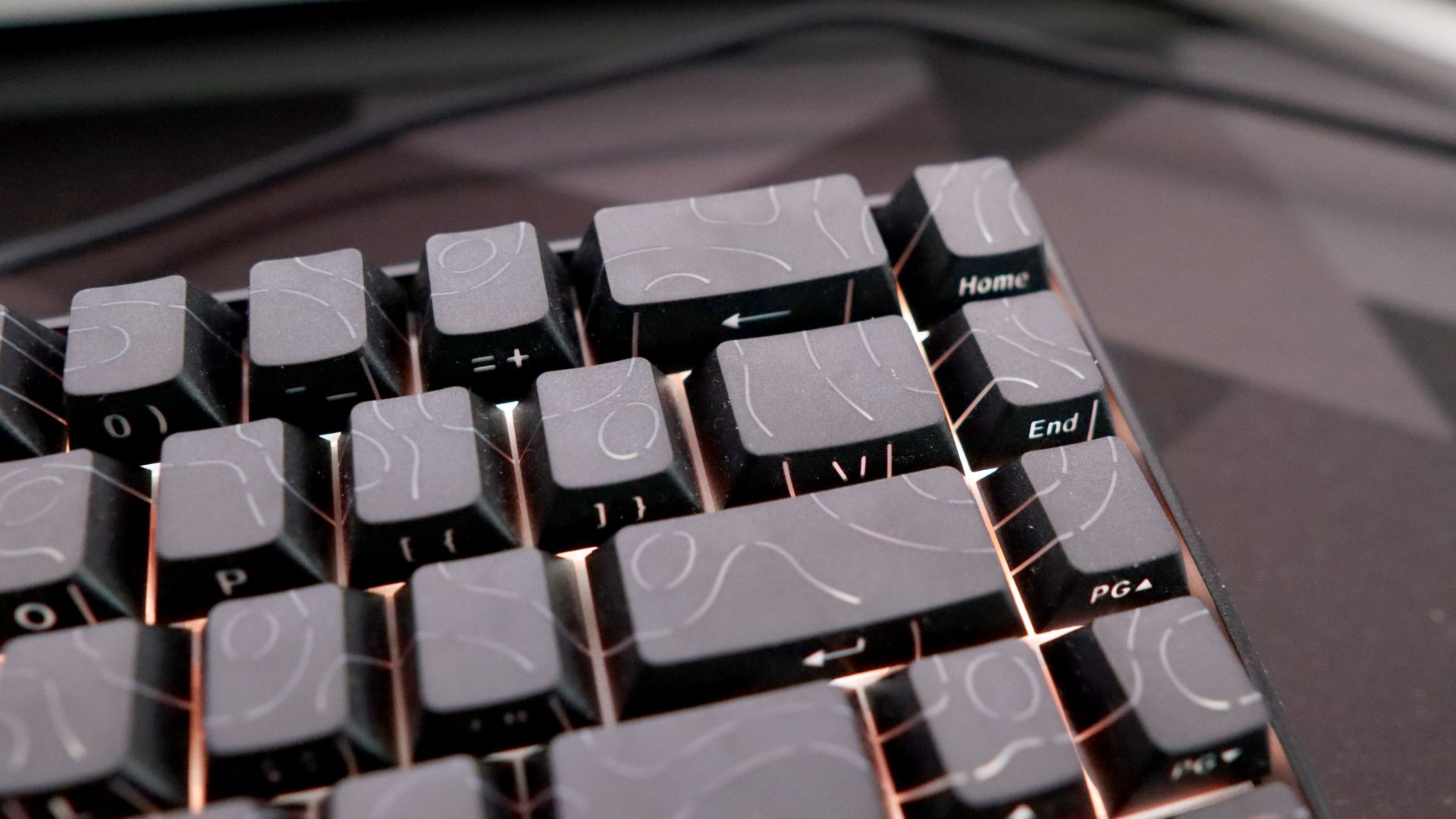

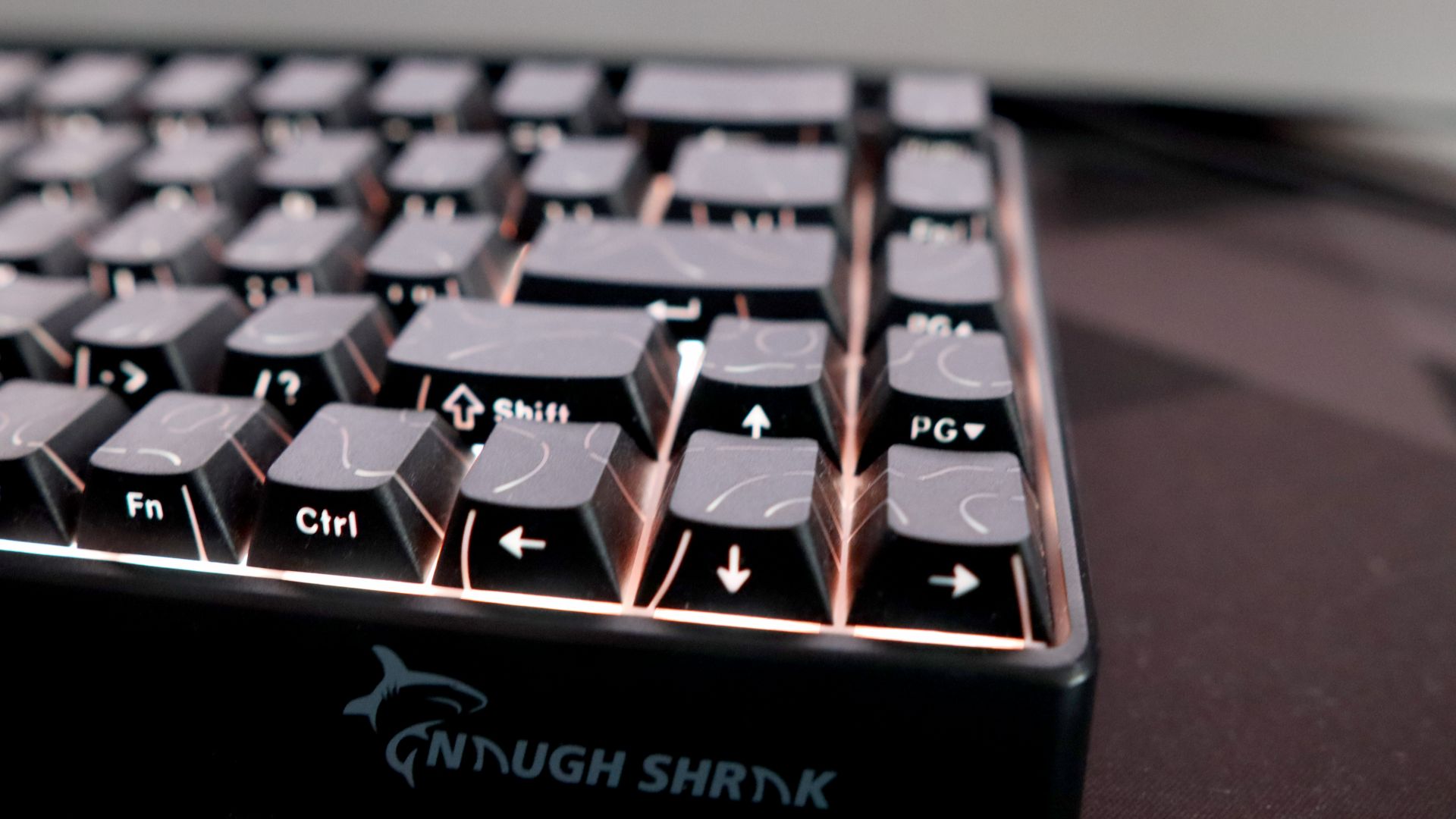
Specifications
Reasons to buy
Reasons to avoid
✅ You want a great gaming experience: The Gamakay offers 8K polling, Hall effect switches and all the benefits of those, including rapid trigger. All for an absurdly low price.
✅ You have a small desk: You can save room by trimming down your gaming keyboard. More room to flick your mouse around or just fill with figurines.
❌ You're stuck in your ways: It might seem silly, but this is both a small keeb and one fitted with some new tech like rapid trigger. Both require a little patience to fully take advantage of, so this may feel a little different to use than your average keyboard.
The Gamakay x NaughShark NS68 is the best budget gaming keyboard thanks to all of the extra features it packs into a low-cost board. Our previous pick, the Mountain Everest 60, is still a great choice should you find one, but they're a bit too hard to spot right now for us to recommend.
The Gamakay isn't just a small and wallet-friendly board; it's also packed full of new features like rapid trigger and Hall effect switches. It's frankly astounding to think you can get such advanced extras at such a light price nowadays.
Rapid trigger registers you letting go of, and then pressing again, keys much quicker, which matters a lot in competitive FPS games where your reticule is wider while moving. In the likes of Counter-Strike 2, this could be the difference between virtual life and virtual death. We used to have a budget rapid trigger keyboard section in this guide, but this Gamakay keeb managed to replace both our best budget rapid trigger option and best budget keyboard choice in one fell swoop.
The NS68 is, as you may be able to guess from that name, a 68% keyboard, and this makes it great for any small desk as it only takes up a little room. It also looks great with programmable RGB and unique-looking keycaps.
However, smaller keyboards like the Gamakay x NaughShark NS68 just aren't always as convenient as full-size boards. Just ask the tiny right-side shift key.
It's not all about the form factor, though. The Gamakay offers up some serious quality. The keyboard's PBT keycaps are a surprise at its price point, and the plastic materials are surprisingly not flimsy. At just over 750 grams, it's also a pretty light beast, and doesn't feel as cheap as it actually is. The version we tested is only wired, though you can pay only a small amount for tri-mode connectivity over 2.4 GHz and Bluetooth.
One of the areas the Gamakay lacks is its software. Perhaps one of the single biggest flaws in most great keyboards. It works fine, but it isn't the cleanest-looking software, and the UI could benefit from a great deal more polish. However, if you can get over that, it's hard not to admire the robust set of features this Gamakay offers for such a reasonable price.
Read our full Gamakay X NaughShark NS68 review.
The best mid-range gaming keyboard
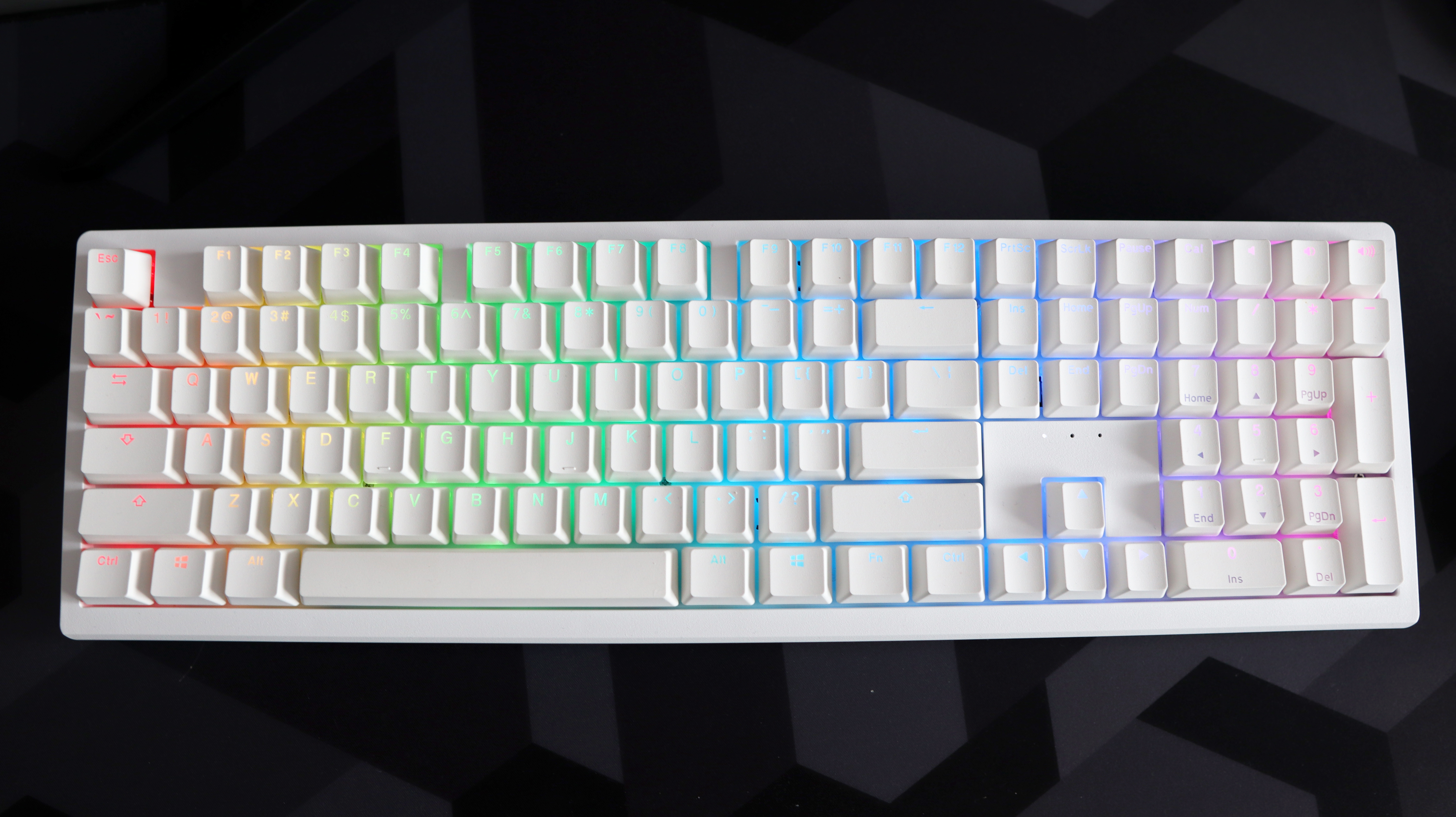
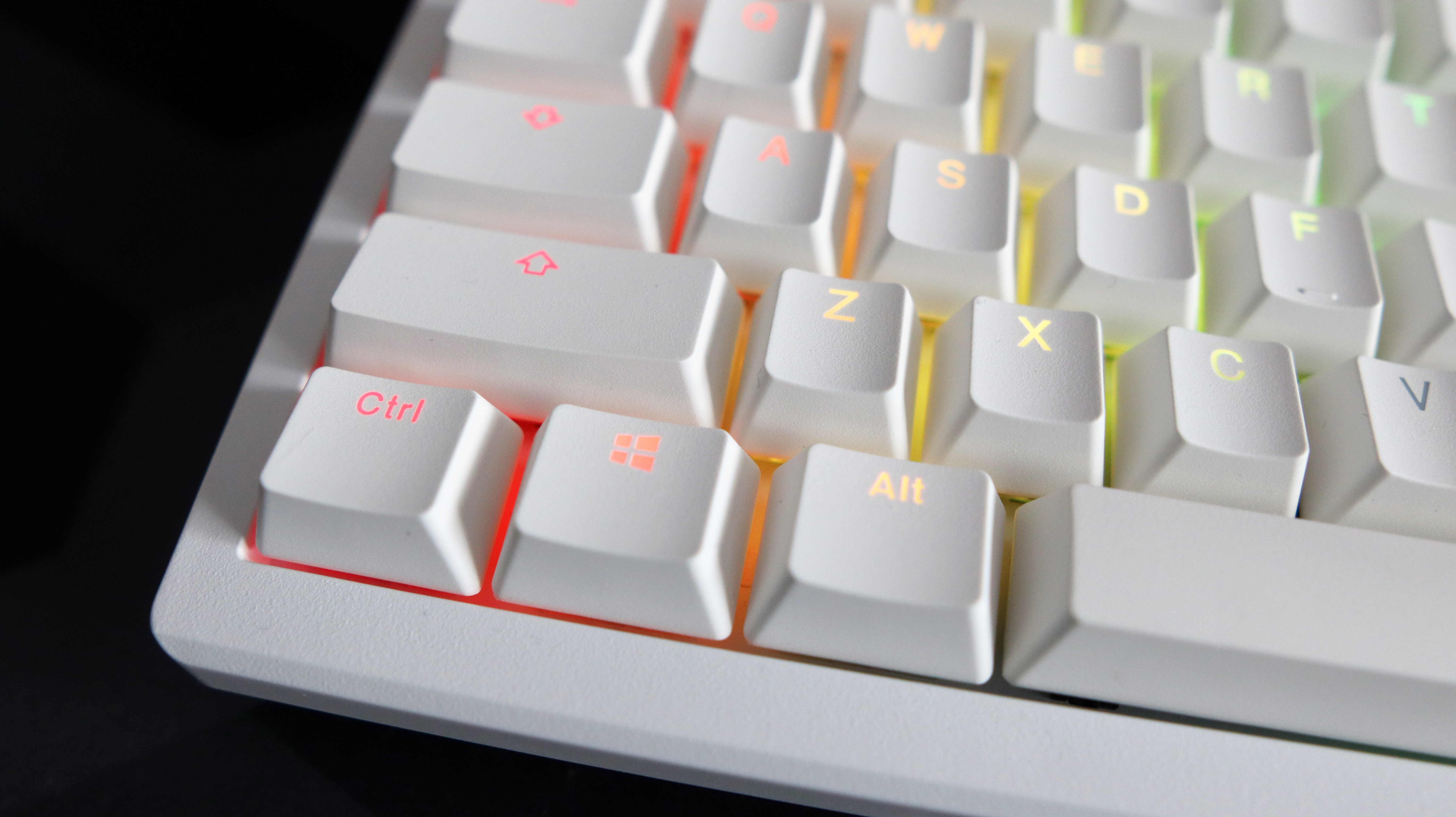

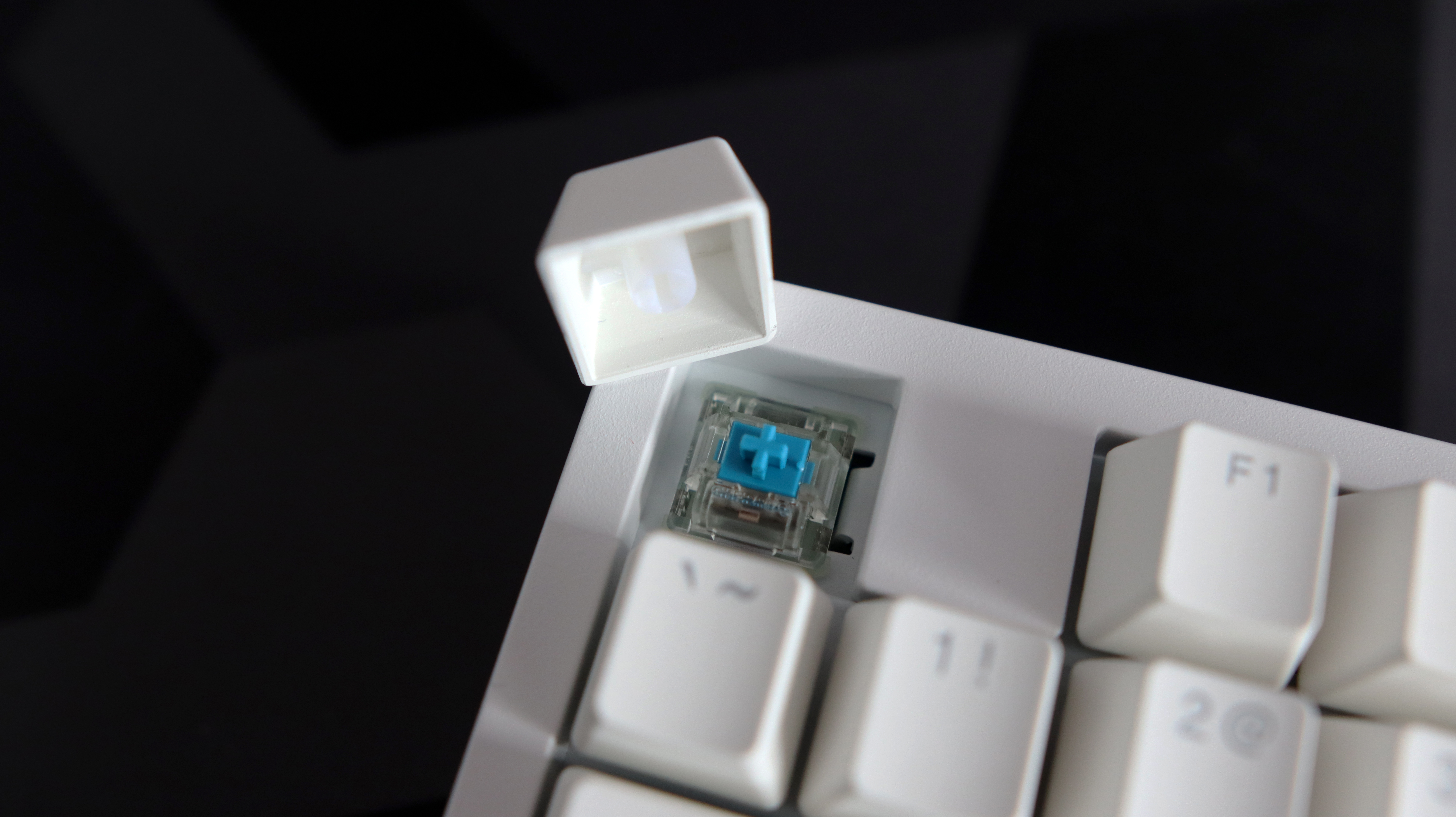
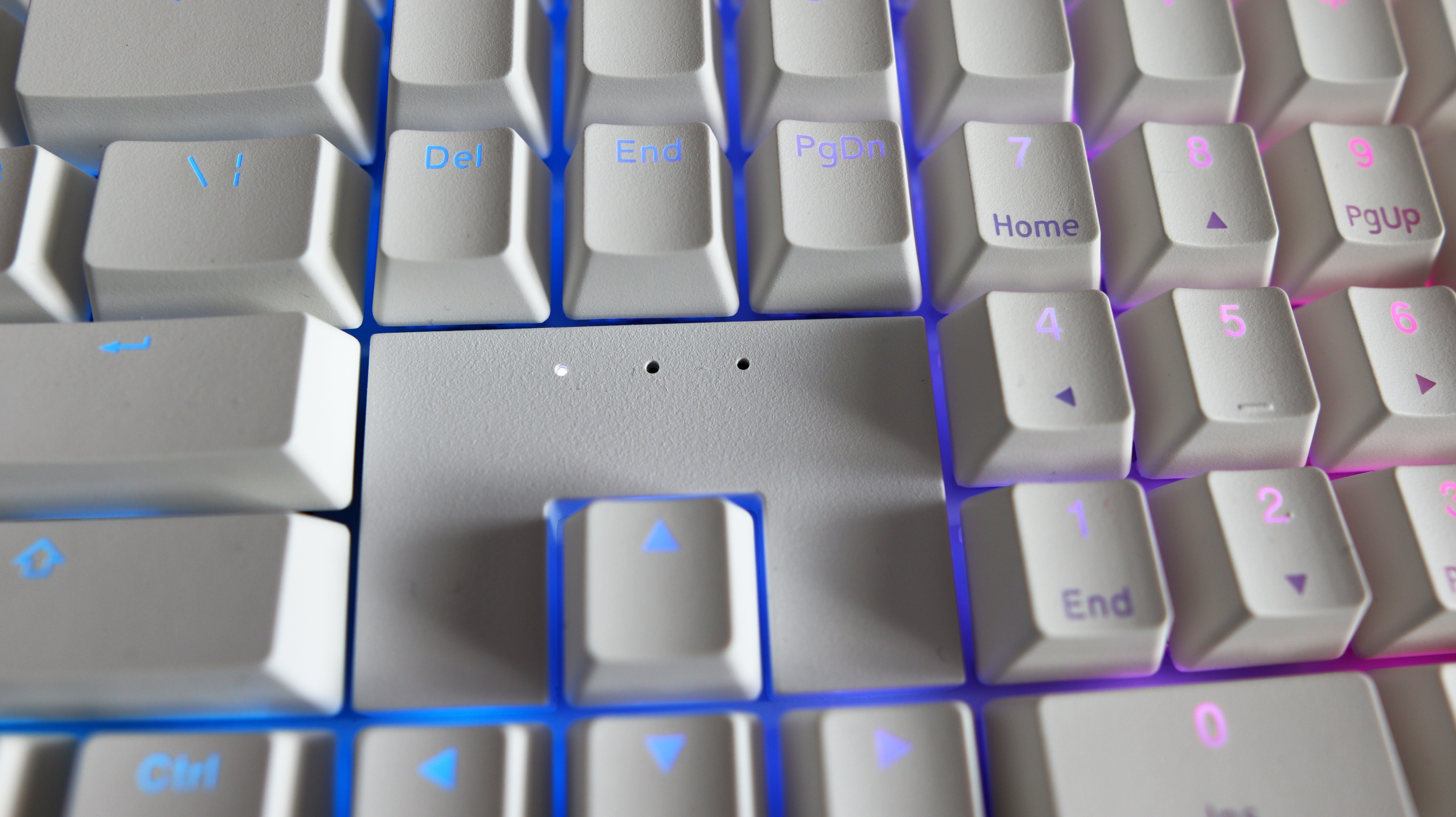
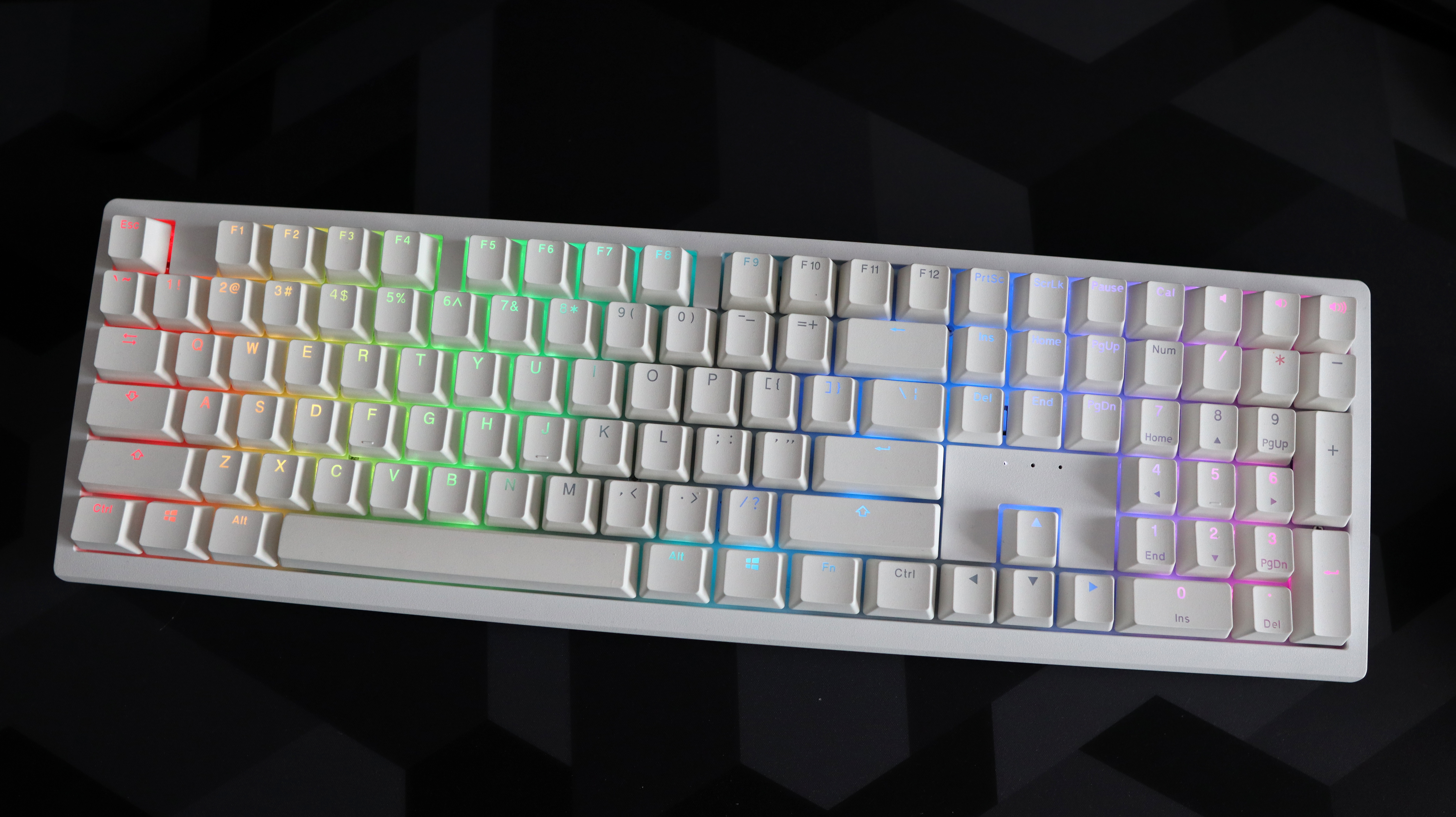
Specifications
Reasons to buy
Reasons to avoid
✅ You just need a great all-around value board: There are few frills to this keyboard, but it's got all the essentials and even some nice-to-haves: solid construction, great typing feel, lubed switches, all the keys (it's full-sized), and even per-key RGB lighting.
❌ You want lots of customizability: This keyboard lacks software, so you're a little limited on the RGB lighting and customizability front.
Gaming keyboards are getting more and more expensive—looking at you, ROG Azoth Extreme. That's why we love this keyboard from Ducky; it's surprisingly affordable. The Ducky Zero 6108 gives us everything we're after and all for under $100/£100, an easy pick as the best mid-range gaming keyboard.
Ducky is pretty well known in the gaming keyboard world for producing sensible, reliable and sturdy keebs. The Zero 6108 might be the best modern example of that design mentality.
Take this thing out of the box and you'll be greeted with a fairly standard-looking gaming keyboard. It's full-size, though there are some extra media keys along the top right. Each cluster of keys has been slightly squished together to save on a bit of room, though it's still a pretty big keyboard by comparison to, say, the Q3 Max or Gamakay X NaughShark NS68.
Each switch is adorned with a PBT keycap—these generally last longer than ABS—and most come pre-applied with lube. If you're noticing a pattern in this guide, that I'm mentioning lube a lot, it's because it really feels like the biggest improvement we've seen in gaming keyboards in a little while now, outside of perhaps Rapid Trigger for competitive gamers.
The Cherry MX2A switches included on the Zero 6108 are great. They're the Cherry switches we've come to know and love over the years, much improved for 2024. The MX2A Blue switches we reviewed don't actually have any lube applied, though they're less for gamers than the Red or Brown switches, which do. Our reviewer Reece has plenty of good things to say about the new Blue switch, and we've tried the new Red switch within the Cherry Xtrfy K5V2 and have plenty of good things to say about those, too.
To say the Zero 6108 comes with few frills would be wrong. There's per-key RGB lighting, and you can get it in a gorgeous white finish like the one we looked at for review. The RGB can be controlled via the board itself, too, to save on unnecessary apps clogging up your PC.
What's most surprising about the Zero 6108 is its wireless connectivity. We've seen some manufacturers ramp up prices for the inclusion of wireless 2.4 or Bluetooth connectivity, and yet others, such as Ducky and Keychron, seem averse to raising prices all that much for it. That's fantastic news for this Zero 6108, which feels reasonably priced even without the wireless connectivity.
So, new switches, full-size, RGB lighting, media controls... and it's from a respectable brand with a good reputation for long-lasting products? Yeah, you can see why the Ducky Zero 6108 ranks so highly for us.
Read our full Ducky Zero 6108 review.
The best rapid trigger gaming keyboard

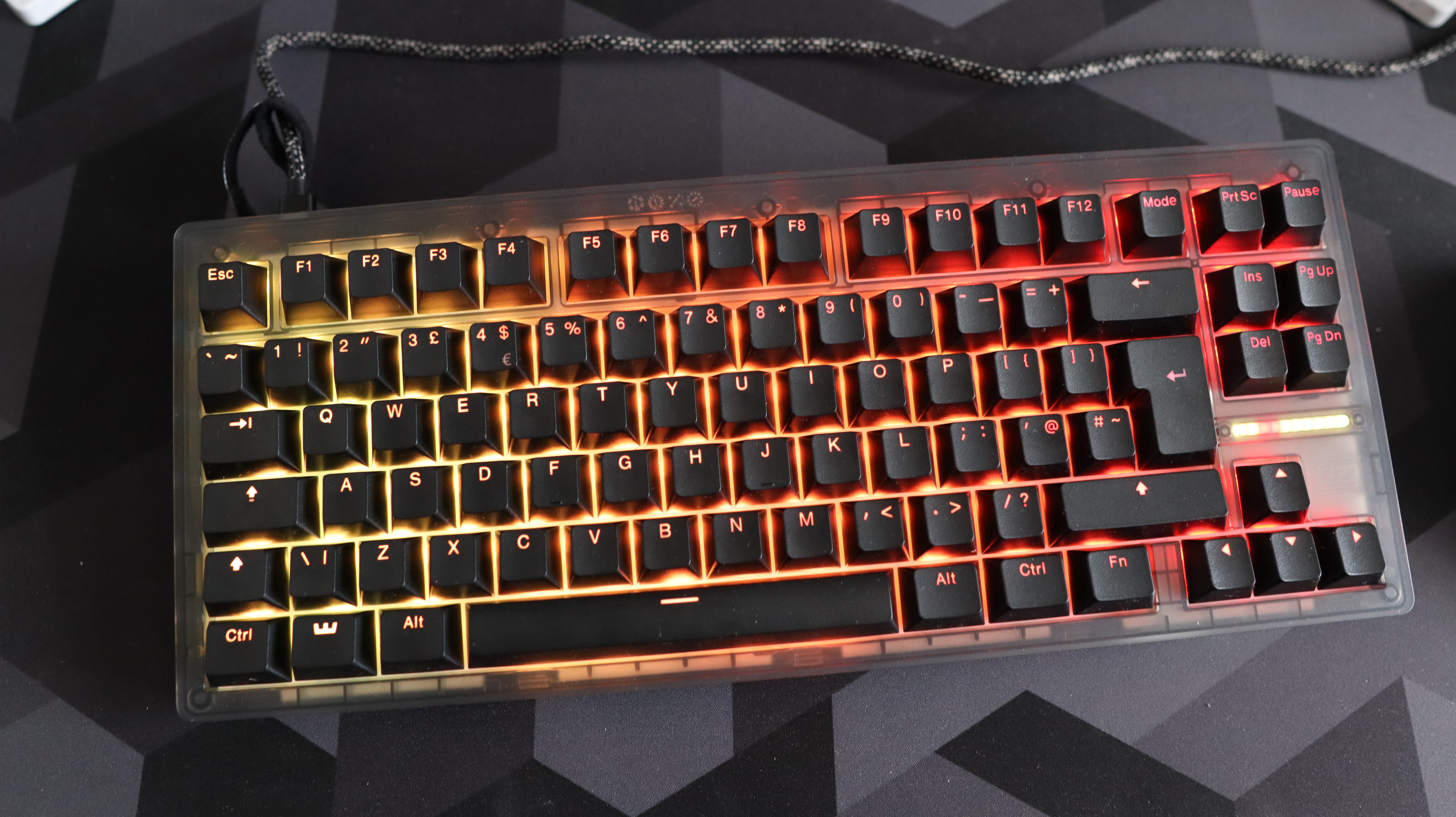

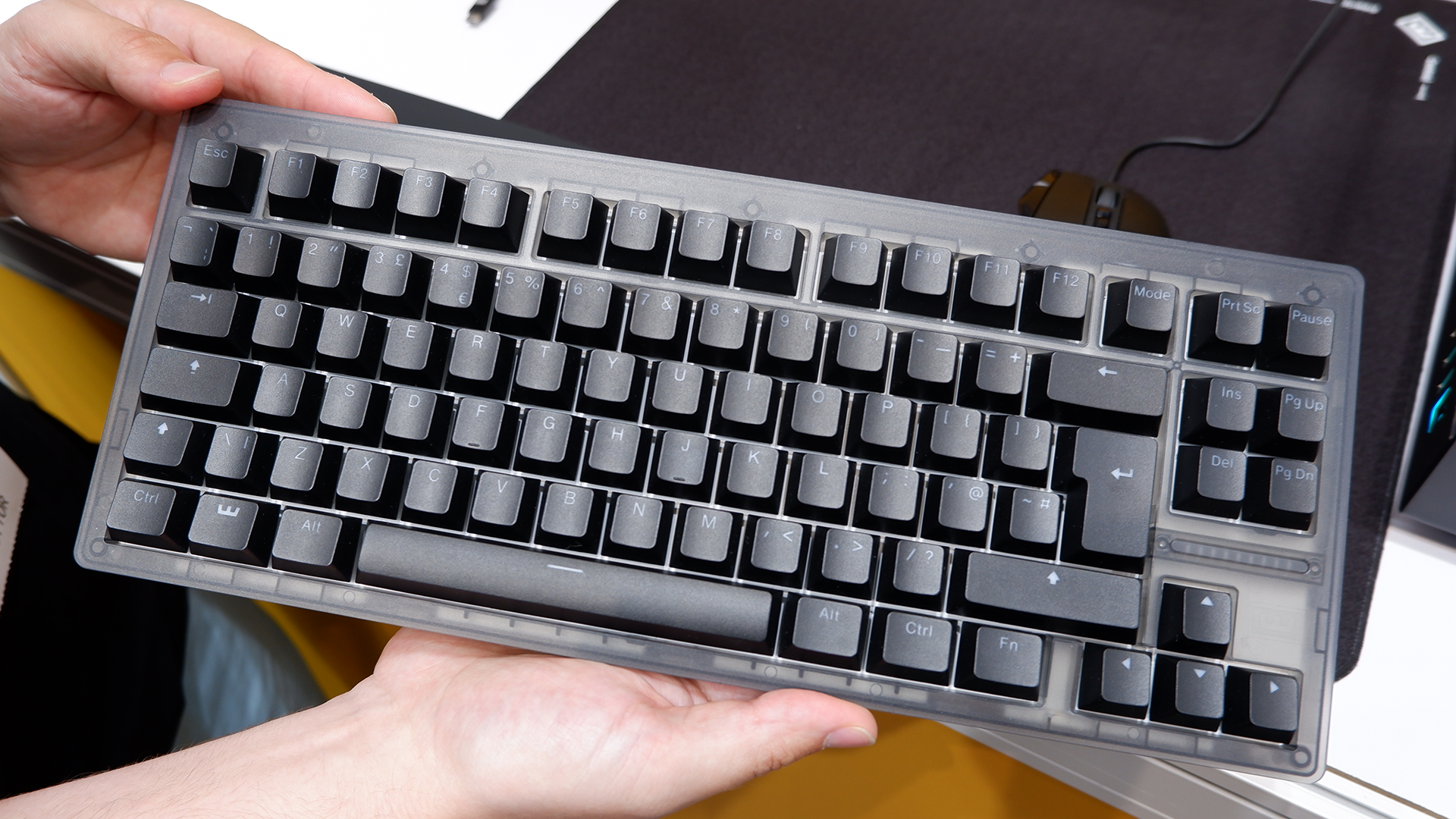
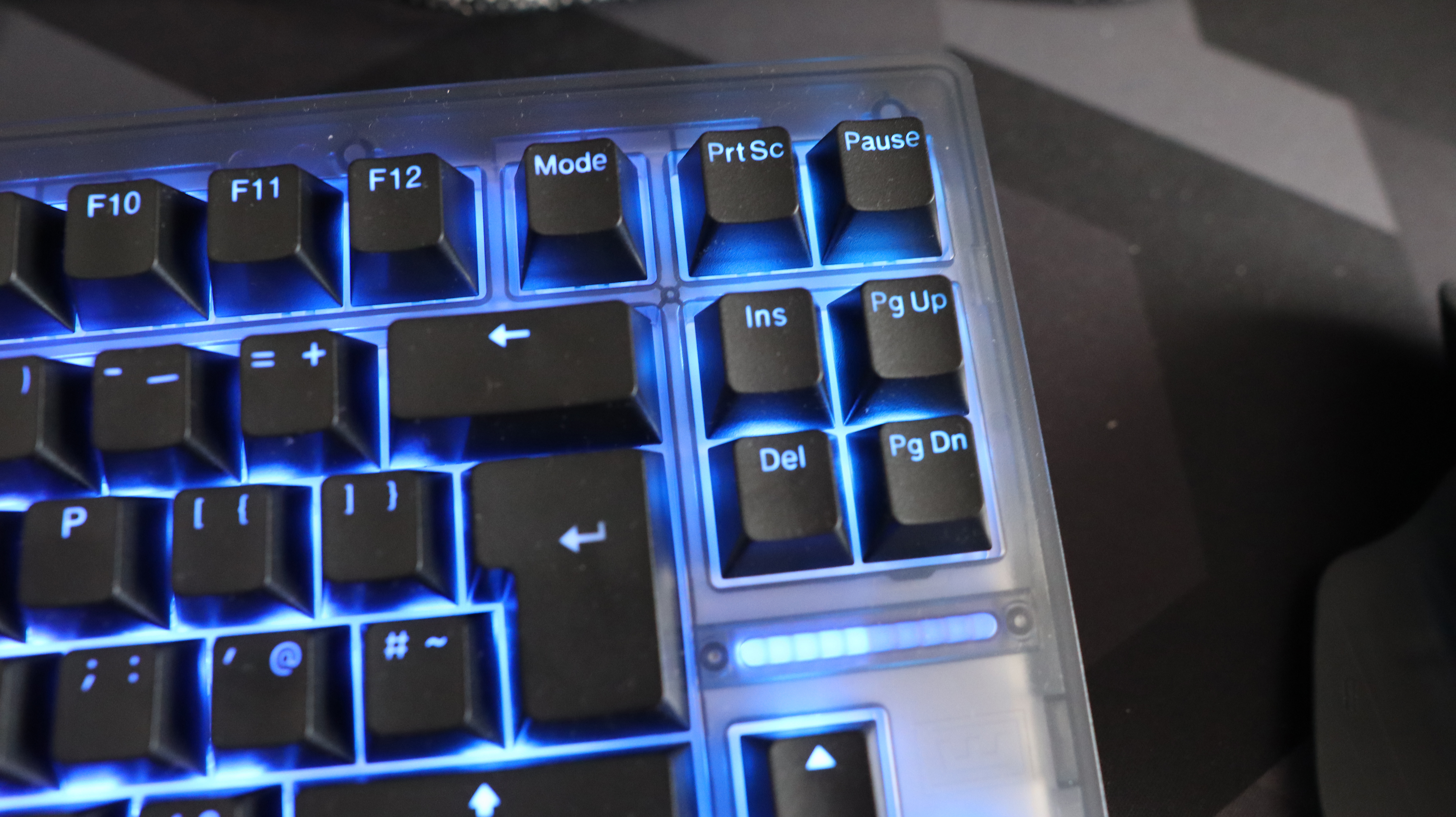
Specifications
Reasons to buy
Reasons to avoid
✅ You want the easiest analog keyboard: Wooting's Wootility is easily the best in the game, and it makes things easy for new and experienced gamers alike.
✅ You want flexibility: The Wooting's profiles are some of the best in the biz, and easy to swap between with a smash of the dedicated Mode key.
❌ You want the sleekest typing experience: There are better keyboards for pure typing experience, though most are without the benefits of Hall effect.
Why is the Wooting 80HE the best rapid trigger gaming keyboard? Because software matters.
Gaming keyboards have evolved in the last few years, or, in Wooting's case, it's been a journey a decade in the making. The company has been pushing to make analog gaming keyboards a thing for a while now, and—hey, would you look at that—it's worked.
I've tried many of today's rapid trigger keyboards, such as the Logitech G Pro X TKL Rapid, SteelSeries Apex Pro TKL Gen 3, Ducky One X, and NZXT Function Elite MiniTKL, and the Wooting is the one I've kept on my desk. Let's get into why.
The 80HE is the latest in a line of Wooting keyboards, most of which I've had my mitts on over the years, and it's by far the most stable and enjoyable to type on. Wooting's first analogue gaming keyboard was announced nearly 10 years ago: the Wooting One. I used it back then, and I loved it, but even I must admit that its full functionality was lost on most games. Whereas the Wooting 80HE has plenty to offer a modern gamer.
Rapid trigger, adjustable actuation, Rapid Tappy, dual-function keys—some set-and-forget features to help you tap out commands quicker, others requiring more work to get acquainted with. But all are fairly easy to set up in Wooting's software, the Wootility.
The Wootility. Whoever came up with the name must be very proud of themselves, but my appreciation for it goes deeper than that. It's about the utility of the Wootility. It's by far the easiest software to use as a newcomer to analog/rapid trigger keyboards and offers full tooltips, diagrams, and even highlights important on-screen information to help explain each of its many varied functions. You need this stuff to use the Wooting 80HE to its fullest—most of all easy access to profiles, which the Wootility delivers.
You can set up multiple profiles in the Wooting software and access them with the Mode button on the board. So, say you're playing a game that requires the snappiest response times—for me, that's Hunt: Showdown. You could set up a profile that's wicked fast and set up just as you like it. Then, when you have to get back to work, just hit the Mode button and you're back to your sensible typing profile. It's pretty slick, and while the NZXT Function Elite and SteelSeries Apex Pro both offer this sort of functionality at your fingertips, I like how Wooting does it the most.
Once set up, this keyboard flies. The Lekker V2 switches, in combination with the PBT or ABS keycap,s are a little wobblier than some of the competition, but the 80HE has come on leaps and bounds compared to its predecessors. It feels great for typing—I've been using it for my 9-5 of writing all day for weeks—but more importantly, slick and responsive for gaming. That's where it comes into its own. Give yourself some time to learn the ropes, and this keyboard comes alive in a competitive shooter.
There's an array of LED lights above the arrow keys on the 80HE, and while slightly superfluous, I do quite like it. It can be set to do a number of things, almost always responding to various other key inputs, but always looking pretty. It pairs nicely with the RGB lighting and the various profiles you can set up.
And while our EIC Dave James thinks it's horrid, all the young kids (generously including myself in this) think the translucent 'PCR Ghost' color is pretty 'sick'.
While it is a touch expensive compared to some budget HE boards, as reflected in our Wooting 80HE review, I've used heaps of them and come away most impressed by this one most of all for gaming. That's a big thumbs up, mostly for the Wootility, but even this professional writer doesn't mind using this keeb all day, every day.
Read our Wooting 80HE review.
The best wireless rapid trigger gaming keyboard
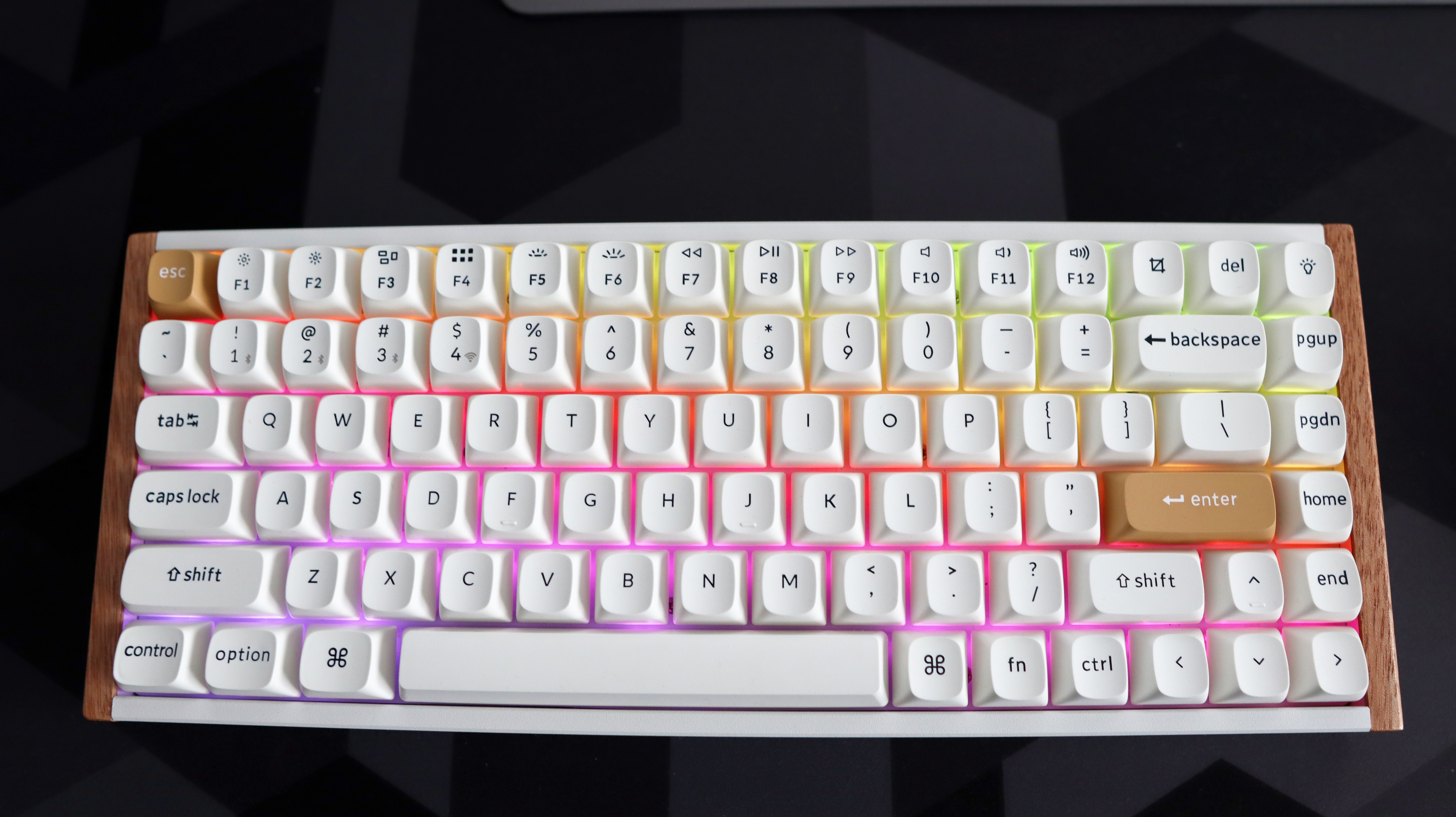
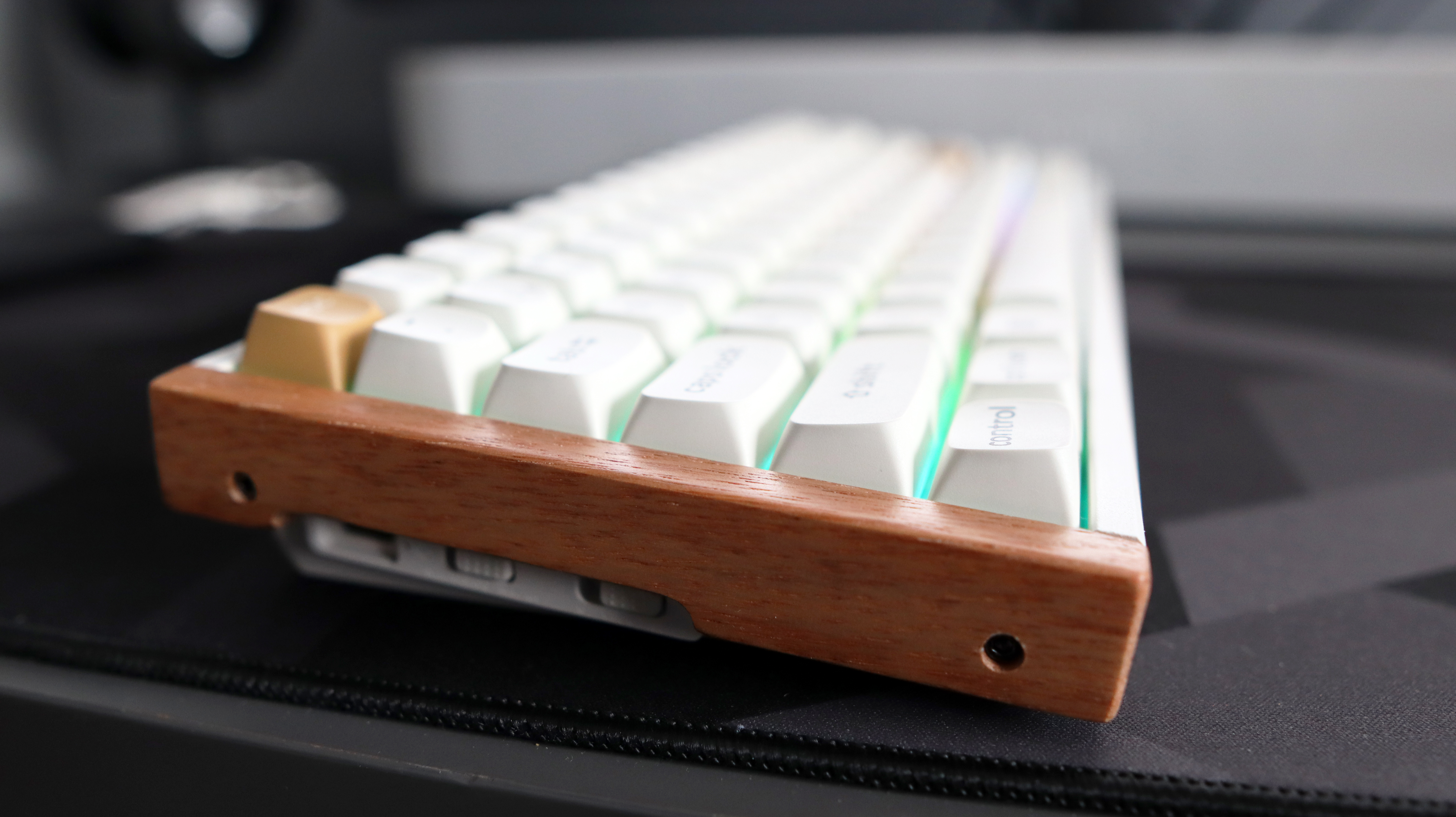
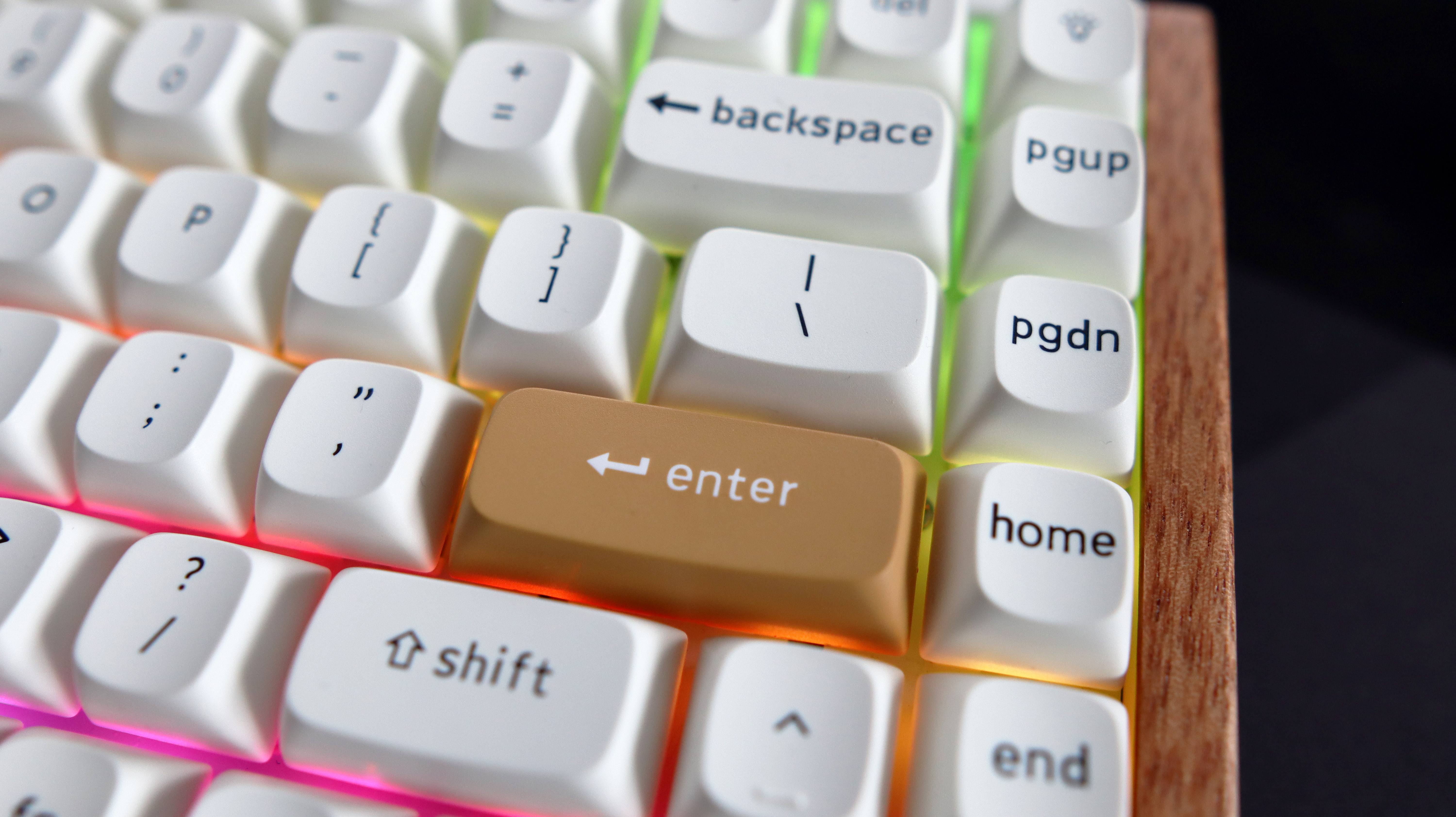
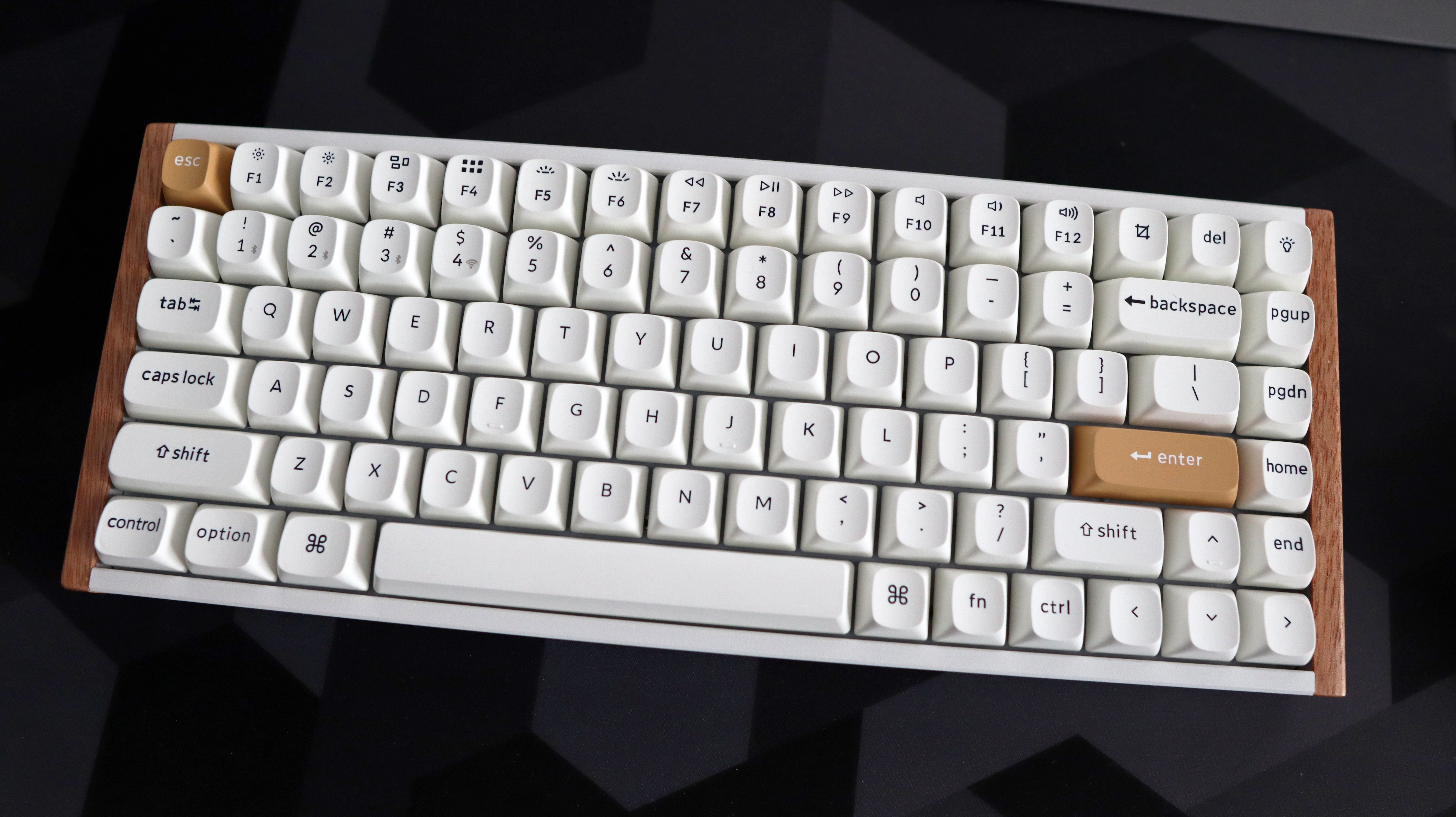

Specifications
Reasons to buy
Reasons to avoid
✅ You're a competitive gamer: Rapid trigger is a type of tech that is best suited for a serious gamer looking to cut mere milliseconds of their reaction time, and you pay extra for it.
❌ You want switch options: Although it's hot-swappable, there are few switches actually compatible with this keyboard.
Keychron has often pushed the envelope for combining new tech with traditional keyboard quality, and nothing proves this more than the Keychron K2 HE, which is the best wireless rapid trigger gaming keyboard we've got our mitts on to date and one of the more affordable.
The 'HE' of this keyboard's name stands for 'Hall effect', which is the kind of switch it uses, and this allows for rapid trigger functionality. Rapid trigger is effectively a way of registering inputs on a keyboard that finely notes exactly how far away the keycap is from the base of the key and lets go of the key as soon as you do.
If you set an actuation point to 0.4 mm, for instance, that is the exact moment your key will stop sending signals to your rig. In real gameplay, this can cut milliseconds of movement, which is an eternity for professional or semi-professional Counter-Strike 2 or Valorant players.
But this isn't all the Keychron K2 HE's Hall effect switches allow for. They also allow for adjustable actuation, so rather than having all switches re-actuate as soon as you re-press them, you can alter at which point each key actuates, getting it just right for your own style of gaming. For most people, this will probably mean setting a higher actuation point for WASD and other such controls for which you might need to be quick on the draw, and lower for the rest. All of this (and more) is super-easy to set up in the web-based configuration tool.
There are plenty of Hall effect keyboards out there now, though. There's the Logitech G Pro X TKL Rapid, the NZXT Function Elite MiniTKL, the Wooting 80HE, the SteelSeries Apex Pro TKL Gen 3... so what makes this one special?
Well, apart from delivering a flawless rapid trigger experience, it's more affordable than most. That's a pretty big win in my books. It's also not lower in quality for its lower price. It still feels incredibly high-quality in terms of sound, feel, and aesthetics. The special edition version our Reece tested has Rosewood side-panelling, which adds a very unique and classy flair to the clacker.
And clack it does, thanks to its tall double-shot PBT keycaps, lubed Gateron double rail switches, and heavy, well-crafted casing. Yes, it's a plastic casing, apart from the wood panels, but there's no flex to be felt with this 966 g, 75% layout keyboard. It's a sturdy affair that feels great and sounds extra creamy to type on.
Oh, did I mention it's wireless? That's a bonus here I wasn't expecting for the money, coming with both 2.4 GHz play and Bluetooth connectivity. You're also getting a whopping 240 hours of battery life without RGB enabled, and 74 hours with it enabled. Considering everything else this keeb has to offer, this is icing on a very fine cake. The only real downside to it is that you shouldn't expect to have a cornucopia of switch choices because, while they are hot swappable, there are few compatible replacements out there right now.
Hall effect switches and the rapid trigger tech that it enables really do seem to be the future of PC gaming keyboards, and when it comes to delivering this in a top-class package, the Keychron K2 HE fires on all cylinders.
Read our full Keychron K2 HE review.
The best silent gaming keyboard


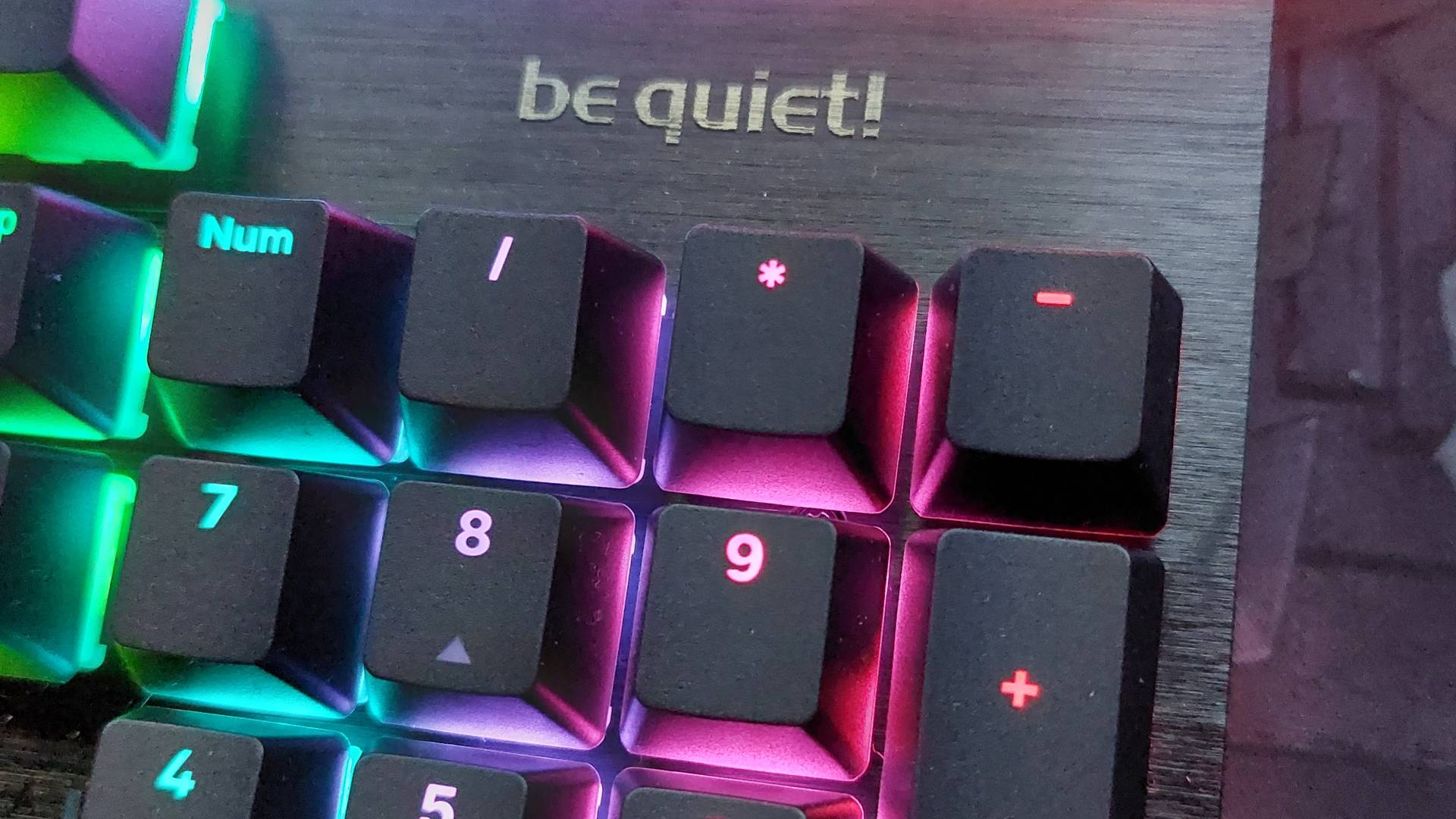
Specifications
Reasons to buy
Reasons to avoid
✅ Sound is a concern: These keyswitches are so quiet that they surprised the PC Gamer office. With a company name like Be Quiet!, there's a lot to live up to, but the Light Mount does so admirably.
❌ You want to be very competitive: The Light Mount doesn't have some modern competitive gaming staples like Rapid Trigger or customizable actuation, and you can get both of those in other keyboards for the same price.
Mechanical keyboards are infamously clacky little beasts, yet the Light Mount says "no more!", being easily the best silent gaming keyboard out there right now. If you want a keyboard as good as any other premium choice, that won't infuriate your housemate or colleagues, Be Quiet!'s Light Mount is the way to go. Three layers of sound-dampening foam and silicone cushioning produce that wonderfully muted sound.
The custom mechanical switches do emit a light noise, but monumentally less than others we've tested, with the space bar being the loudest of the lot. They give the Topre Realforce R2 a real run for their money, and the switches are much better for a game than Topre's capacitive touch switches.
The typing feel is great, with its soft silicone keypresses feeling surprisingly unsquishy. It is, however, hotswappable, in case the idea of any silicone under your keycaps puts you off.
The whole keyboard looks great with per-key RGB customization, and software that allows you to fine-tune those flashy lights. The software is quite good as far as gaming keyboard software goes, and intuitive too. However, you will soon be able to customize the keyboard from a web-based version of the app, should the idea of any extra software be a little much for you.
All of this is given in a reasonably priced package that, whilst not exactly budget, outpaces the RealForce R2 for value. It also come with a two-year warranty and some nifty little features like great RGB software, NKRO rollover, and a smooth media knob. That media knob is a tad basic but a great inclusion and just tucked away enough in the top left corner to fit its purpose.
Be Quiet!'s parent company acquired Listan Group, which is responsible for the rather gorgeous budget keyboard, the Mountain Everest 60. It's not quite as affordable as the Everest, but of similarly great quality for its price point.
The only major place this may lose out to similarly priced competition is the lack of competitive features like Rapid Trigger. If you haven't heard of Rapid Trigger prior, there's a good chance you don't need it, though, as it's a relatively niche way of cutting a couple of milliseconds of reaction time in games.
The main draw here is the quiet keys, but what made us love the Light Mount is everything it manages to cram in at the same time.
Read our full Be Quiet! Light Mount gaming keyboard review.
The best tenkeyless gaming keyboard
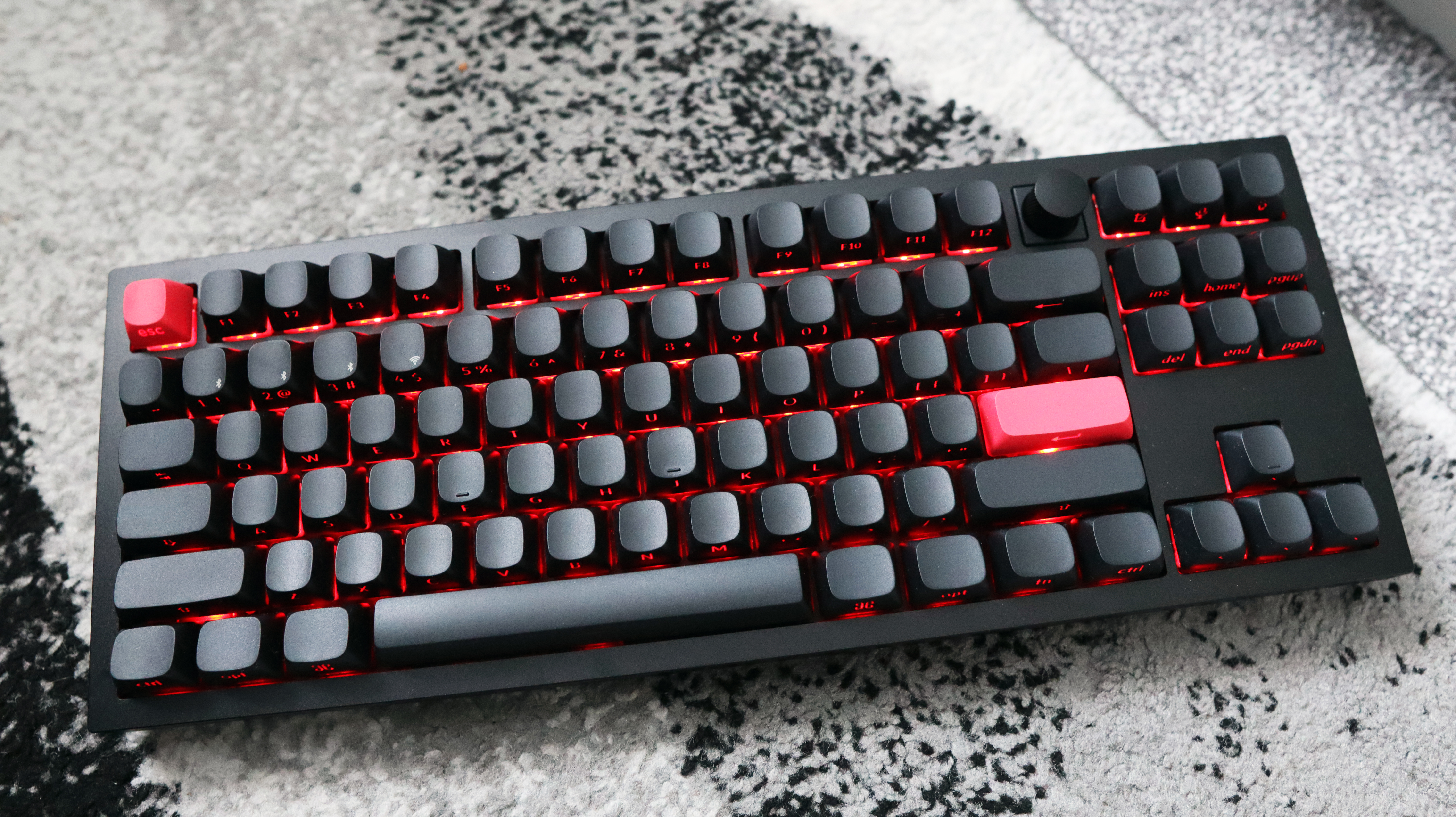


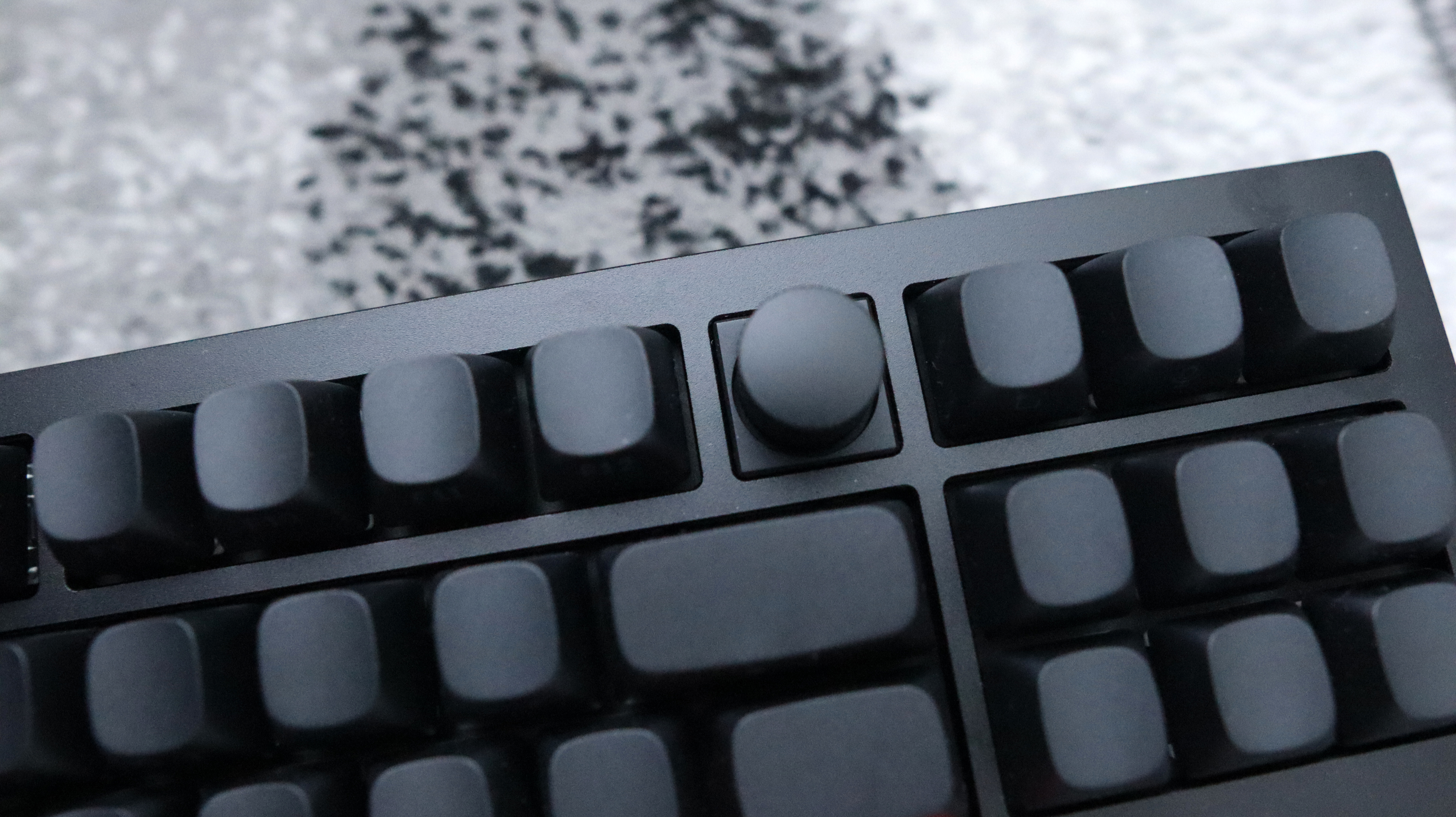
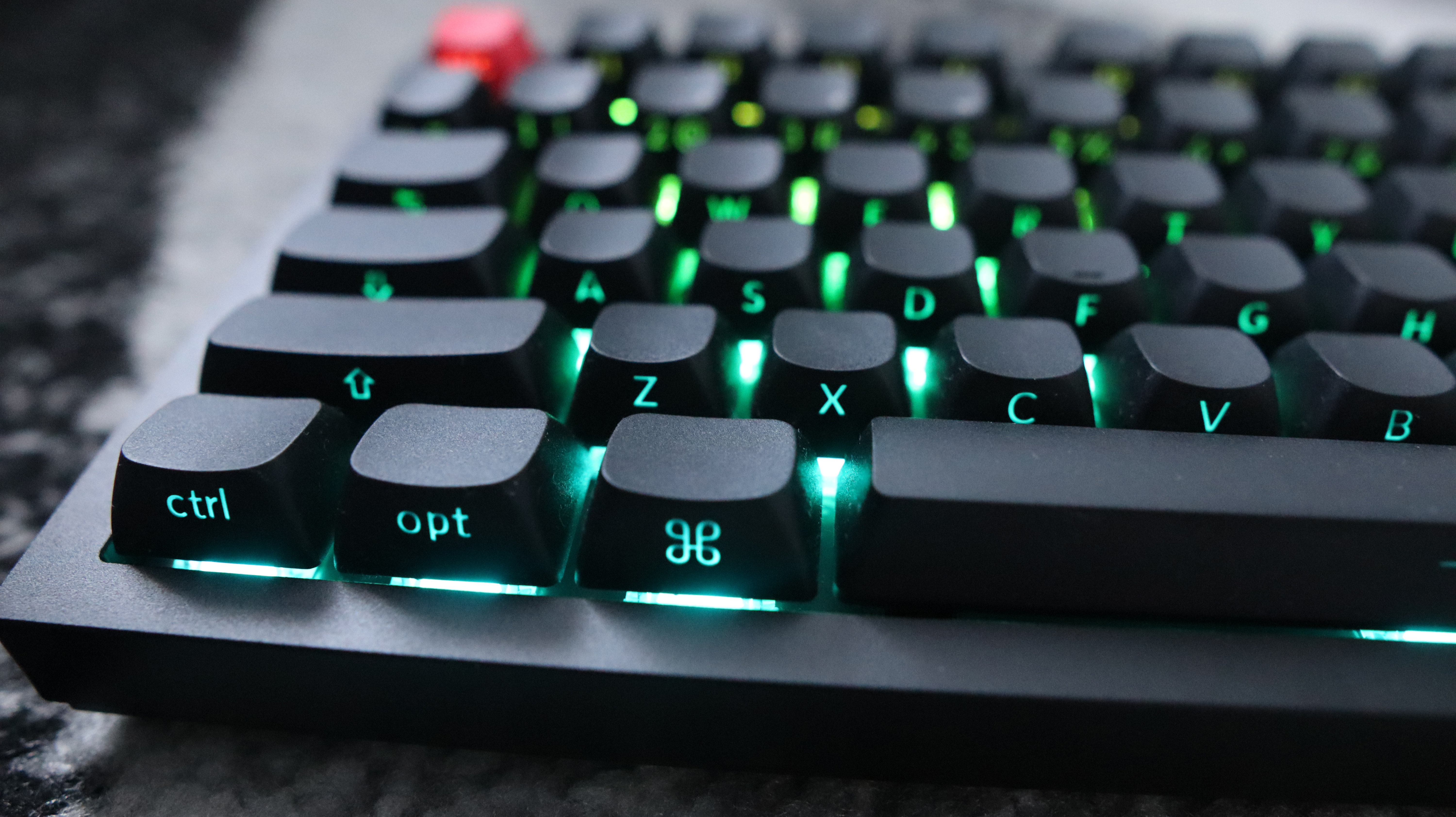
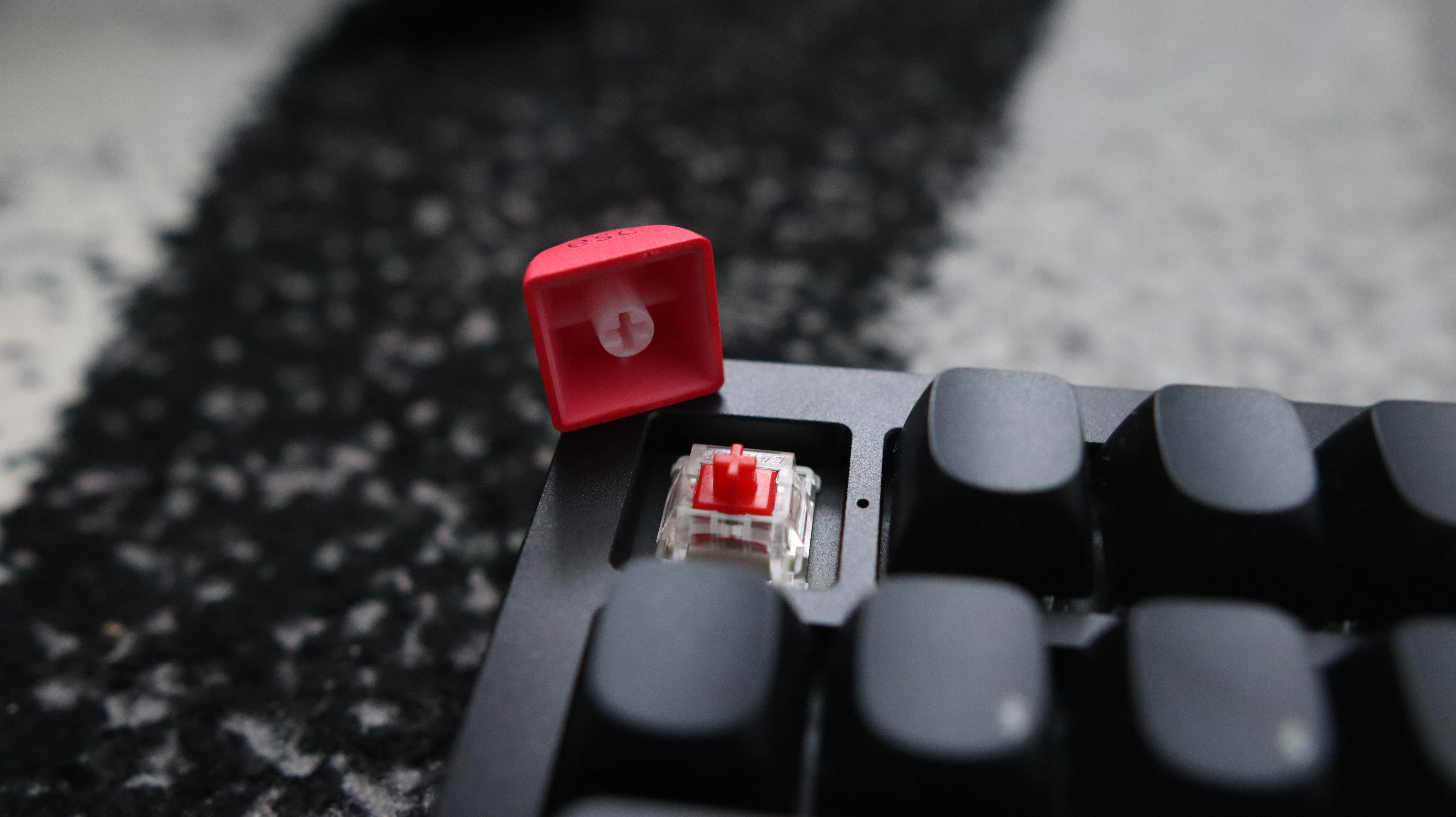
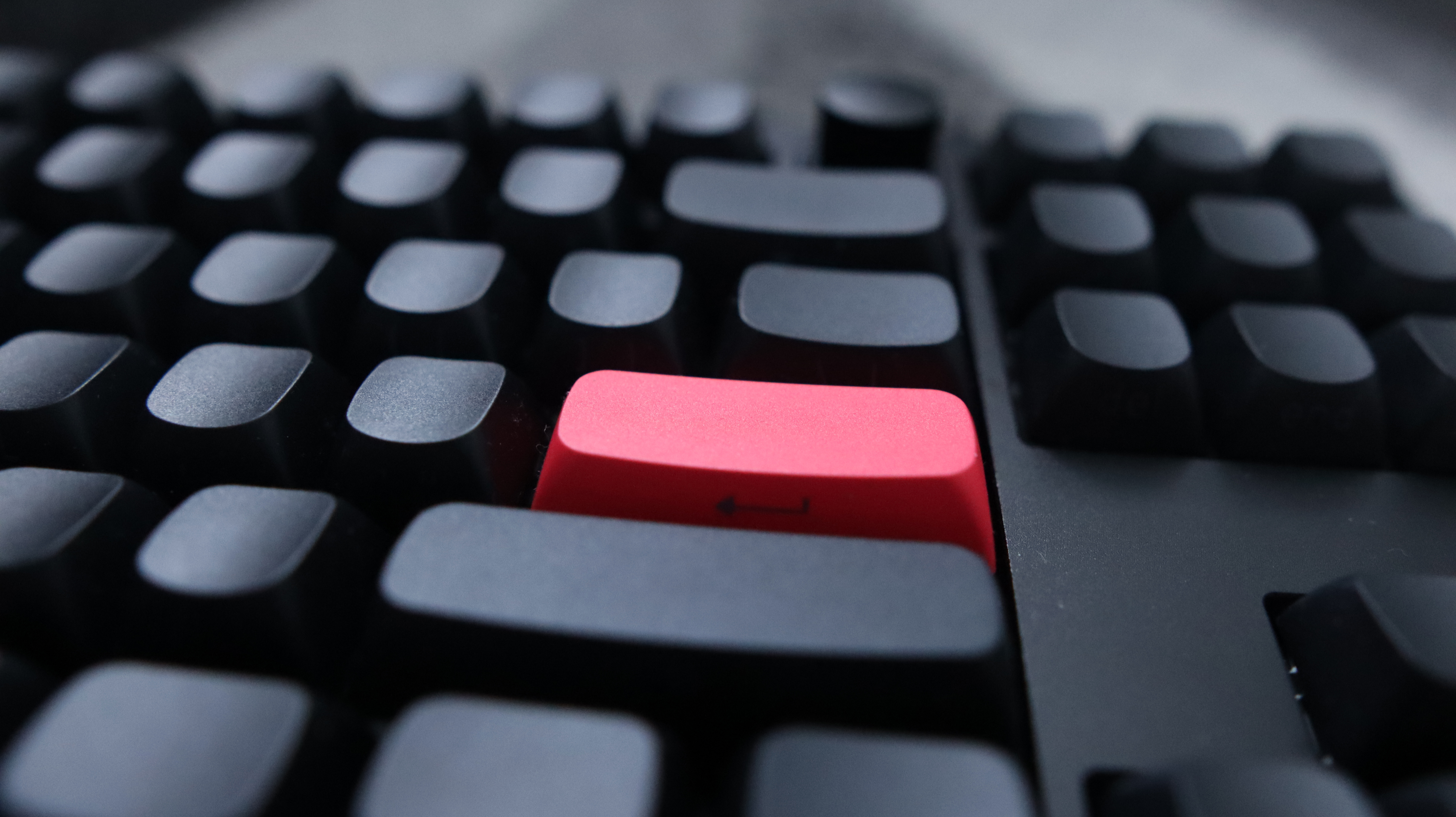
Specifications
Reasons to buy
Reasons to avoid
✅ You want the complete package: I've tried many tenkeyless keyboards over the years, and none get so much right as the Keychron Q3 Max.
❌ You are looking for affordable excellence: The Q3 Max delivers excellence, but it's far from affordable.
A delightful typing experience wrapped in a weighty block of aluminum, the best tenkeyless gaming keyboard has to be the Keychron Q3 Max.
Don't be fooled into thinking the tenkeyless (TKL) gaming keyboard market isn't as competitive as the full-size one. It absolutely is. We've tested heaps of excellent TKL boards over the past few months alone, such as the Razer Huntsman V3 Pro TKL and ROG Azoth—two fantastic keyboards from big names in the industry. And still, we've come away most impressed by the Q3 Max.
Keychron isn't a household name, though with more boards like this, and the K2 below, it's going to make one helluva name for itself.
The Q3 Max is crafted out of a piece of thick, machined aluminum. It weighs a whopping 2.045 kg as a result. Don't be put off by that, however. We often find that heavier keyboards are sturdier and offer a much-improved typing experience over lighter, flimsier boards.
That's the case here. The Q3 Max is a dream to type on. The many layers making up its construction include sound-dampening foam, film, a latex pad and more foam. This produces a steady and consistent typing experience that's on another level next to some.
And the sound of it. The Q3 Max sounds divine.
One of the key benefits of a TKL keyboard is that it takes up less room than a full-size keeb. That means lopping off the numpad, hence the name, and usually losing other extraneous features, such as dedicated media keys. However, we've seen a growing trend for keyboard manufacturers to stuff some sort of media controls elsewhere, and that's exactly what Keychron has done here.
The Q3 Max comes with a knob, otherwise known as a dial, which offers volume up/down, zoom in/out, brightness up/down, or a whole lot more. It's whatever you want it to be, within reason, and changeable via the open-source QMK firmware keymap tool, Launcher. Launcher is available to use via a browser, which is pretty neat.
Each key on the Q3 Max is fitted with an RGB backlight, which is also controllable via that same dial and the onboard shortcut keys. There are three switches to choose from: Gateron Jupiter Red, Brown and Banana. All three come pre-lubed, which means, like the ROG Strix Scope II 96, they're slick to type on.
With wireless functionality across 2.4 GHz via a provided dongle and Bluetooth, or a wired USB Type-C connection, you have a choice of options for connectivity. The battery is a good 180 hours on paper with the backlight disabled, or 100 hours with it on, and in practice, we rarely had to reach for the USB cable to charge the Q3 Max.
Though it does cost a fair chunk of cash, which is somewhat expected, but doesn't make it sting any less. At least you can be sure you're getting your money's worth. A simply fantastic TKL gaming keyboard and office hero, the Keychron Q3 Max really is the complete package.
Read our Keychron Q3 Max review.
The best low profile gaming keyboard
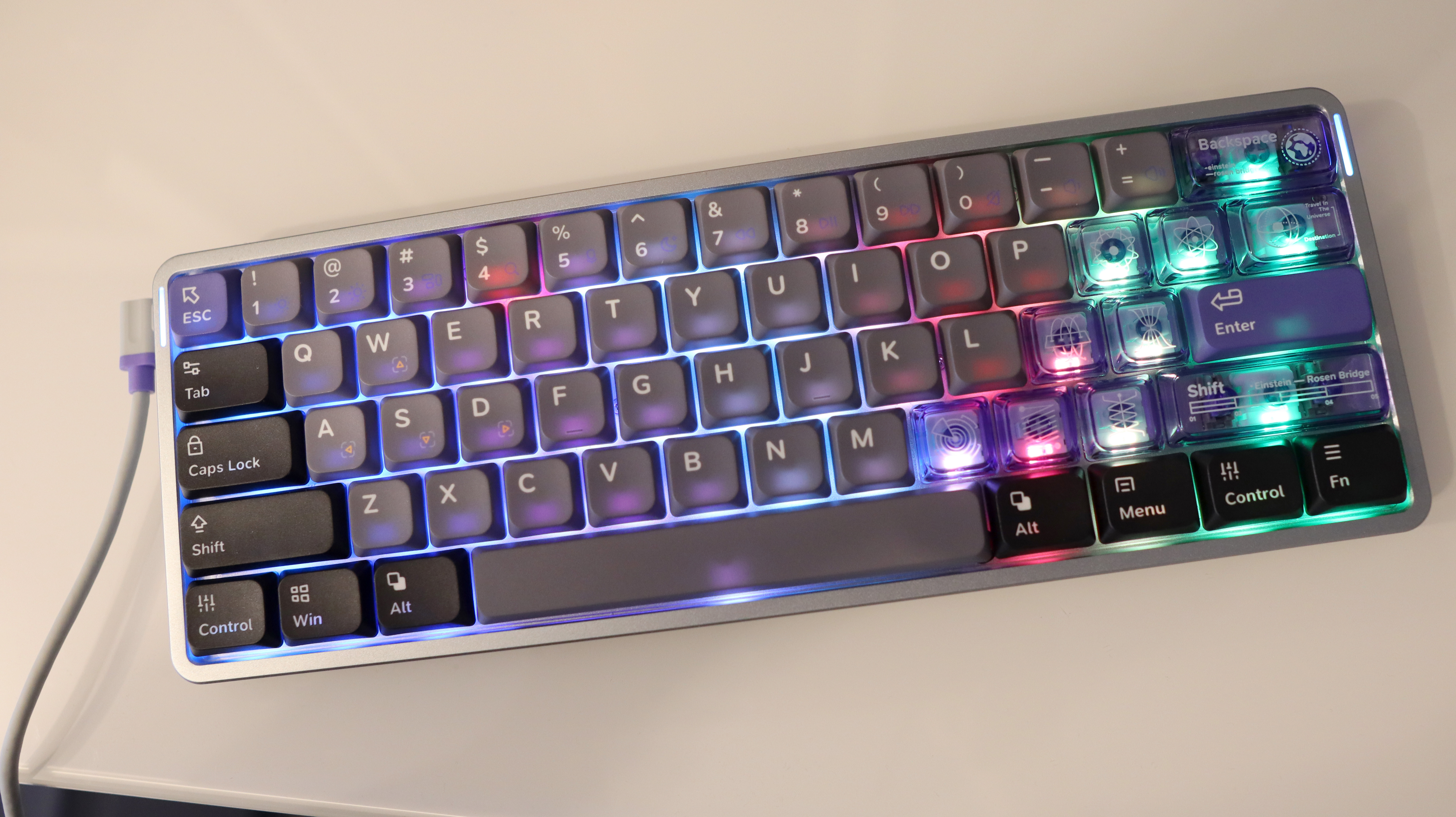


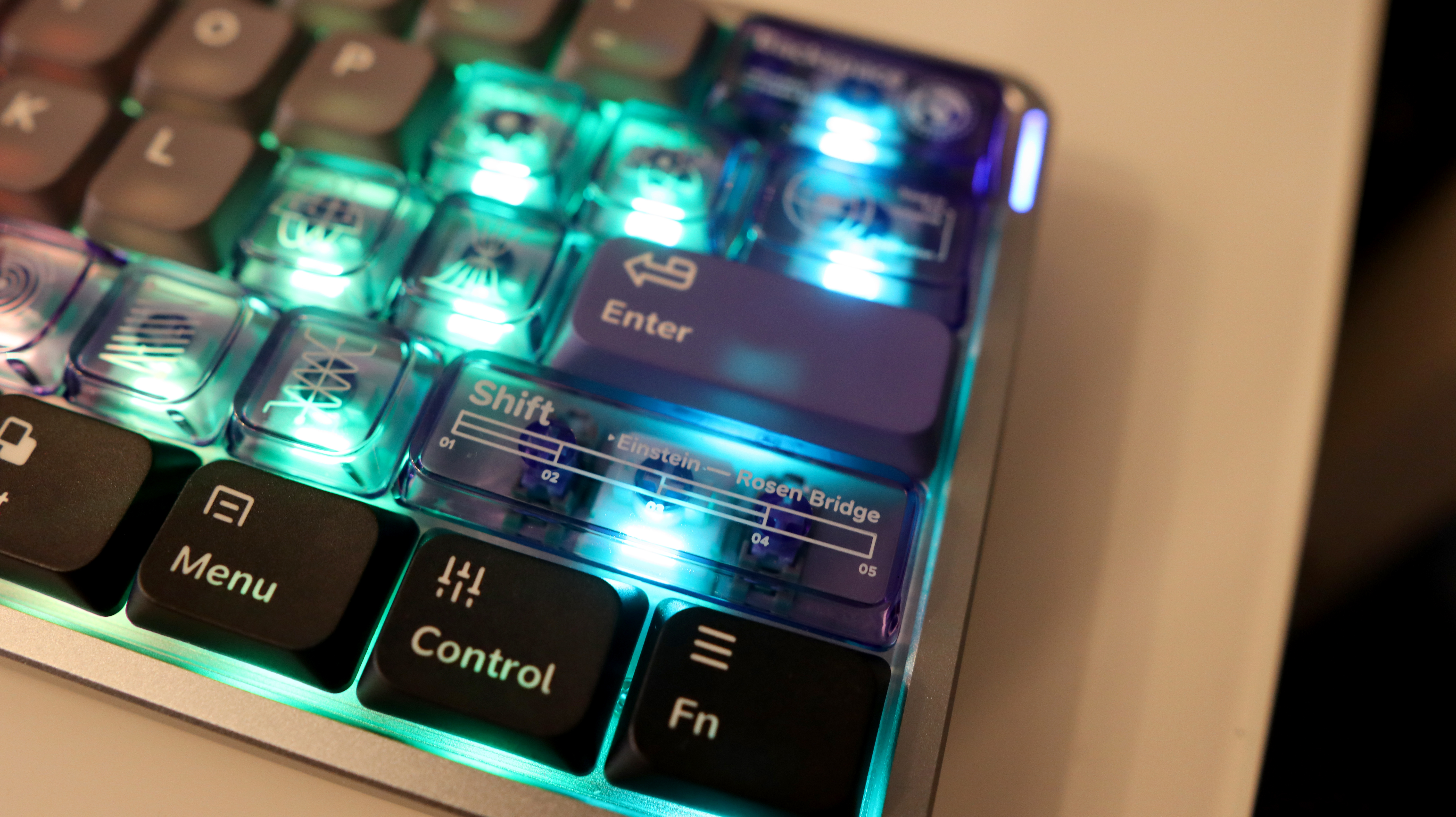
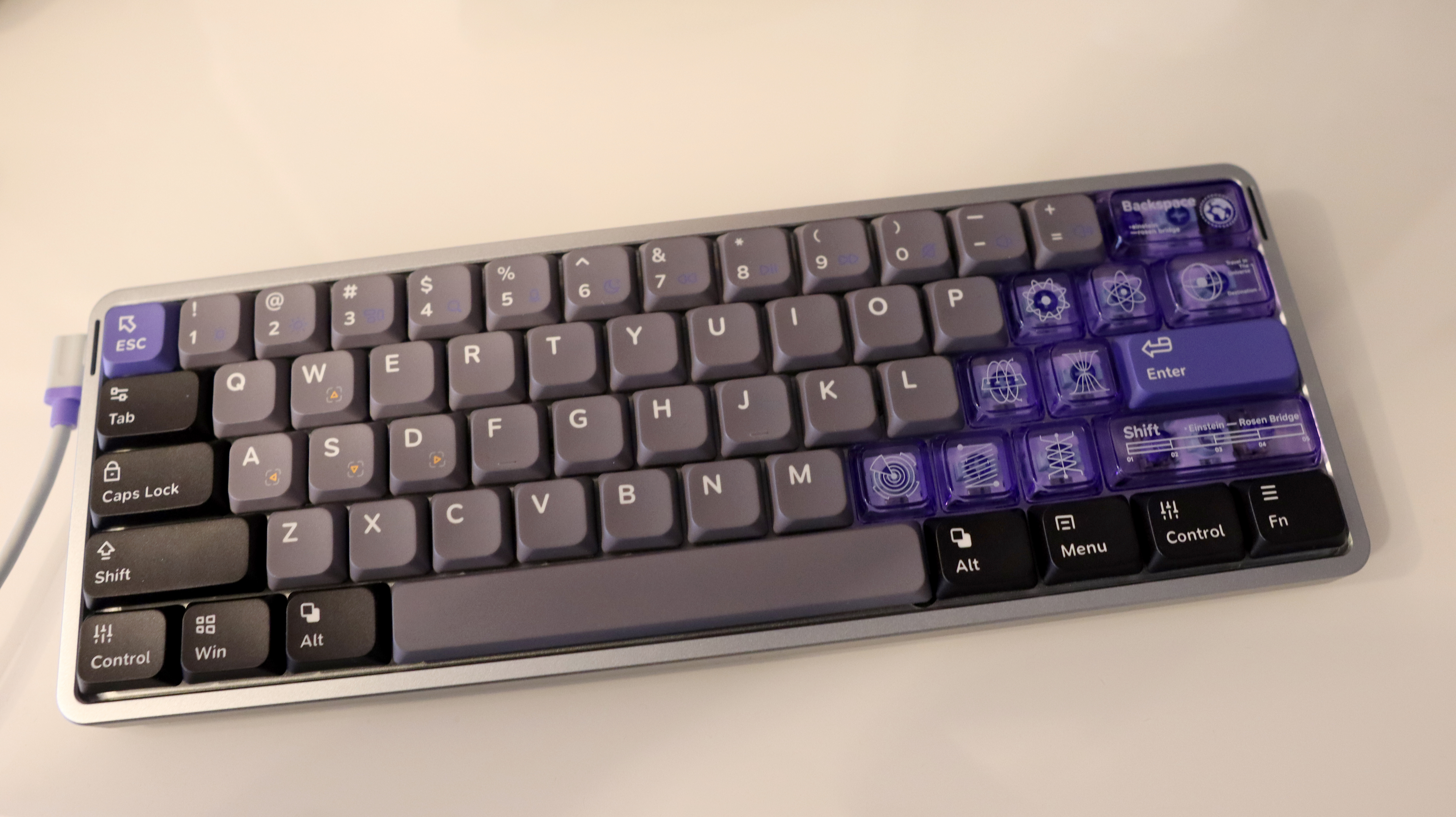
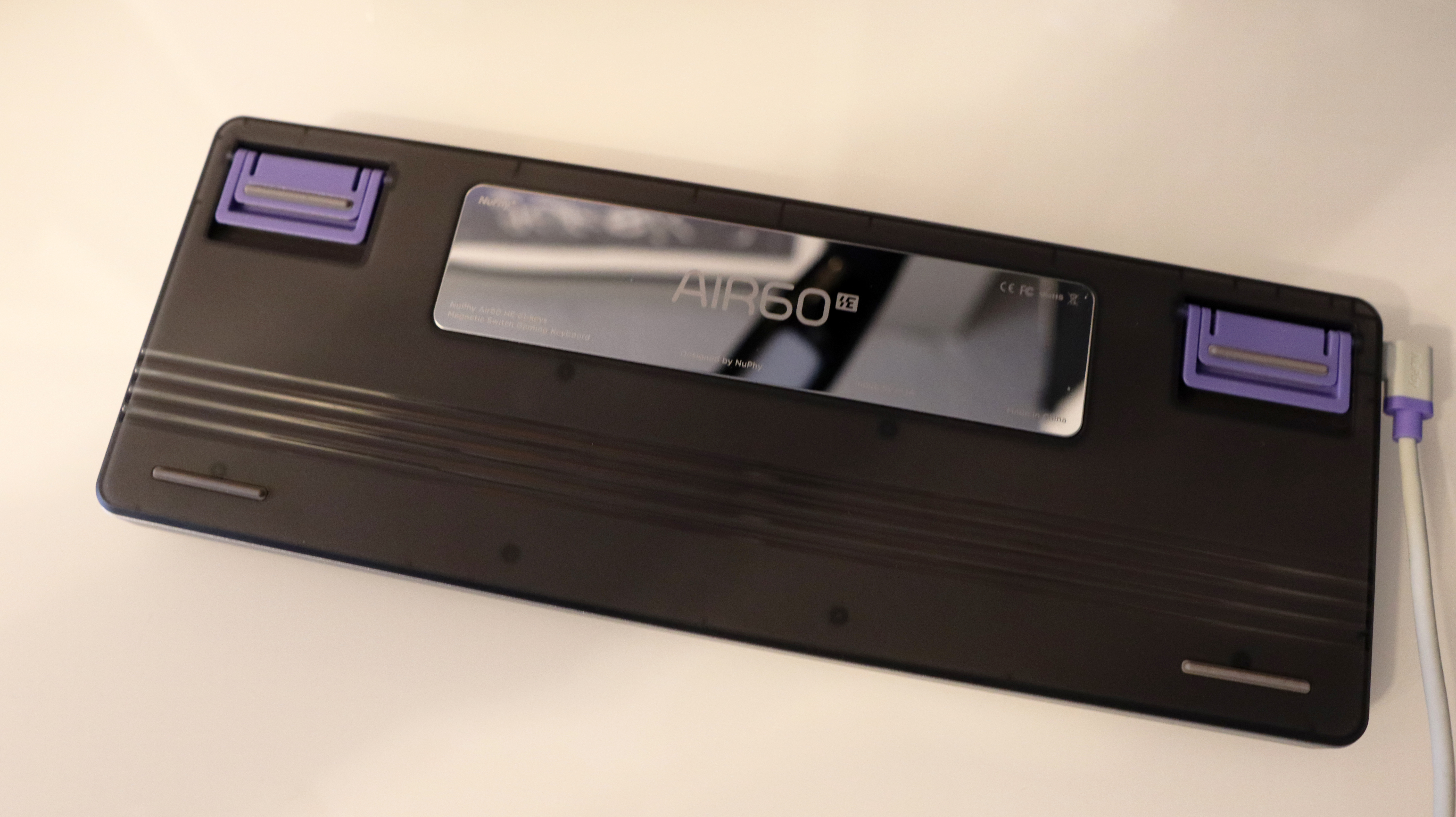
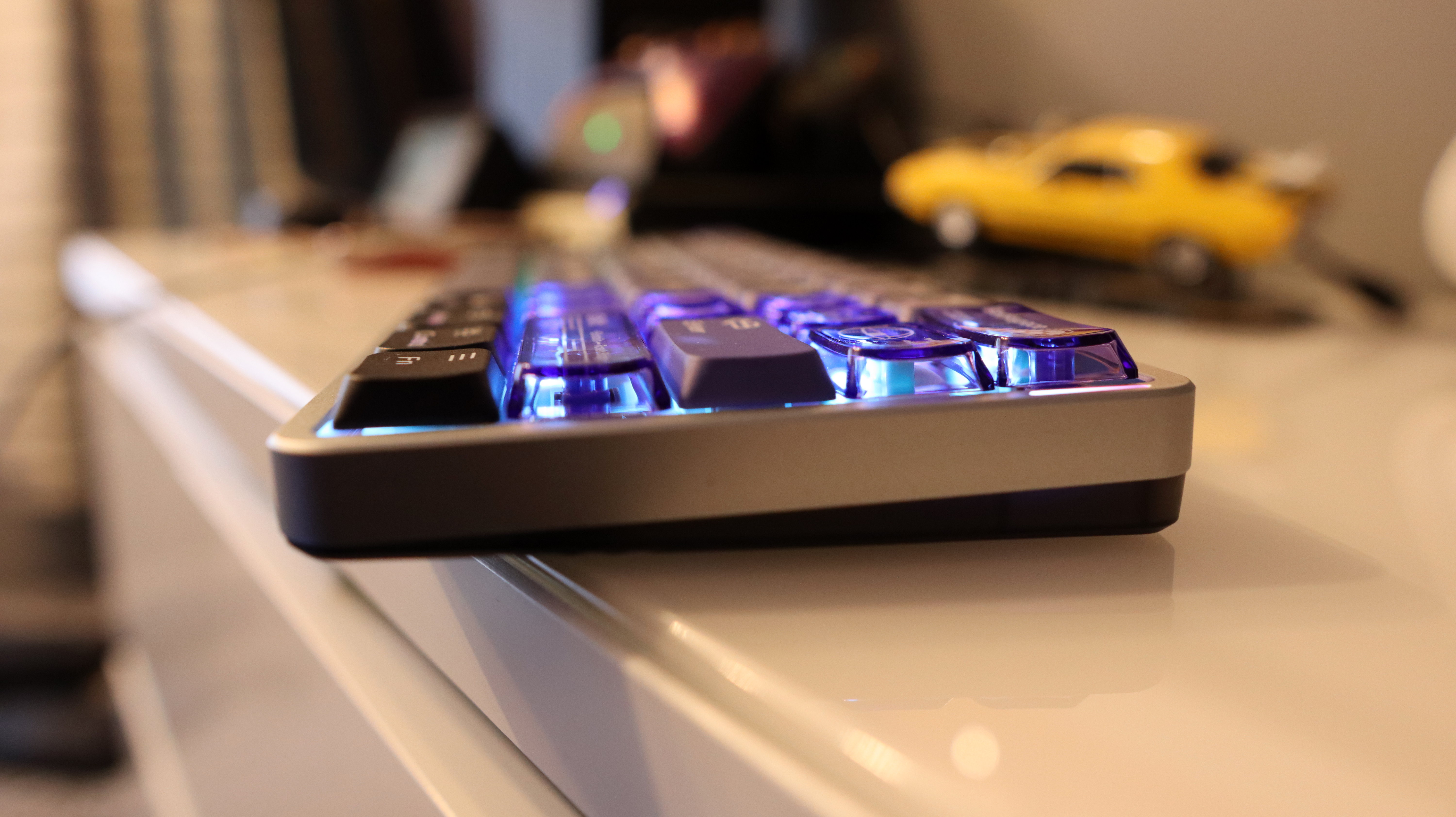
Specifications
Reasons to buy
Reasons to avoid
✅ You want the quickest keyboard around: The NuPhy isn't a one-trick pony. It's low-profile, affordable, and quicker than most thanks to down to a 0.1 mm actuation and 8,000 Hz polling.
✅ You prefer a low wrist position: There's no need to bend your wrists with a low-profile gaming keyboard such as this.
❌ You want a numpad or a function row: The smaller 60% footprint used here is great for gaming, but does make office or school life a little tougher.
The best low-profile gaming keyboard is the NuPhy Air60 HE. You'll agree with me once you hear about it.
Coming in as one of the cheapest Hall effect keyboards I've seen so far, it offers rapid trigger, adjustable actuation down to 0.1 mm, 8,000 Hz polling, and RGB backlighting for a fraction of the cost of many.
The adjustable actuation is notably impressive on this board. It goes from 3.3 mm down to 0.1 mm. That means the slightest pressure on a keycap will be translated in-game for rapid response times—providing you're quick on the ball yourself, that is.
Rapid trigger is one of the more sought-after features on a gaming keyboard these days. The Air60 HE does that well, of course. This means you don't have to wait for switch resets to make another move, which makes for snappier movements in-game.
The affectionately named 'Mod Tap' and 'Hyper Tap' offer up different ways to access functions on a per-key basis, depending on how a key is pressed and when it resets. All of which might be useful in some very specific circumstances—I'm yet to find a brilliant use for any of them, but I'm sure one at the very least exists.
All these features are easy to use and adjust through the software, which is contained within a web browser, much like Wooting's awesome software. This means it's easily accessible anywhere and there's less on your desktop requiring constant updates or popping up every time you boot your PC.
Our reviewer, Reece, called the NuPhy software: "some of the easiest-to-use, yet most powerful software around."
Onto the build. The switches are sleek, factory-lubricated, and especially smooth in use. For low-profile switches, they don't feel particularly limited in travel, and they're rated to 3.5 mm. The Jade Pro switches are a little heavier than their non-Pro counterparts, at 40 g to 30 g.
With RGB backlighting and a quality chassis, there's nothing much to complain about here. However, the small size, while great for gaming and large mouse movements, is lacking some key functions that might make everyday office work a bit of a pain.
See what I mean with this keyboard? Affordable, fast, feature-filled—the NuPhy does the lot.
Read our full NuPhy Air60 HE review.
The best ergonomic gaming keyboard
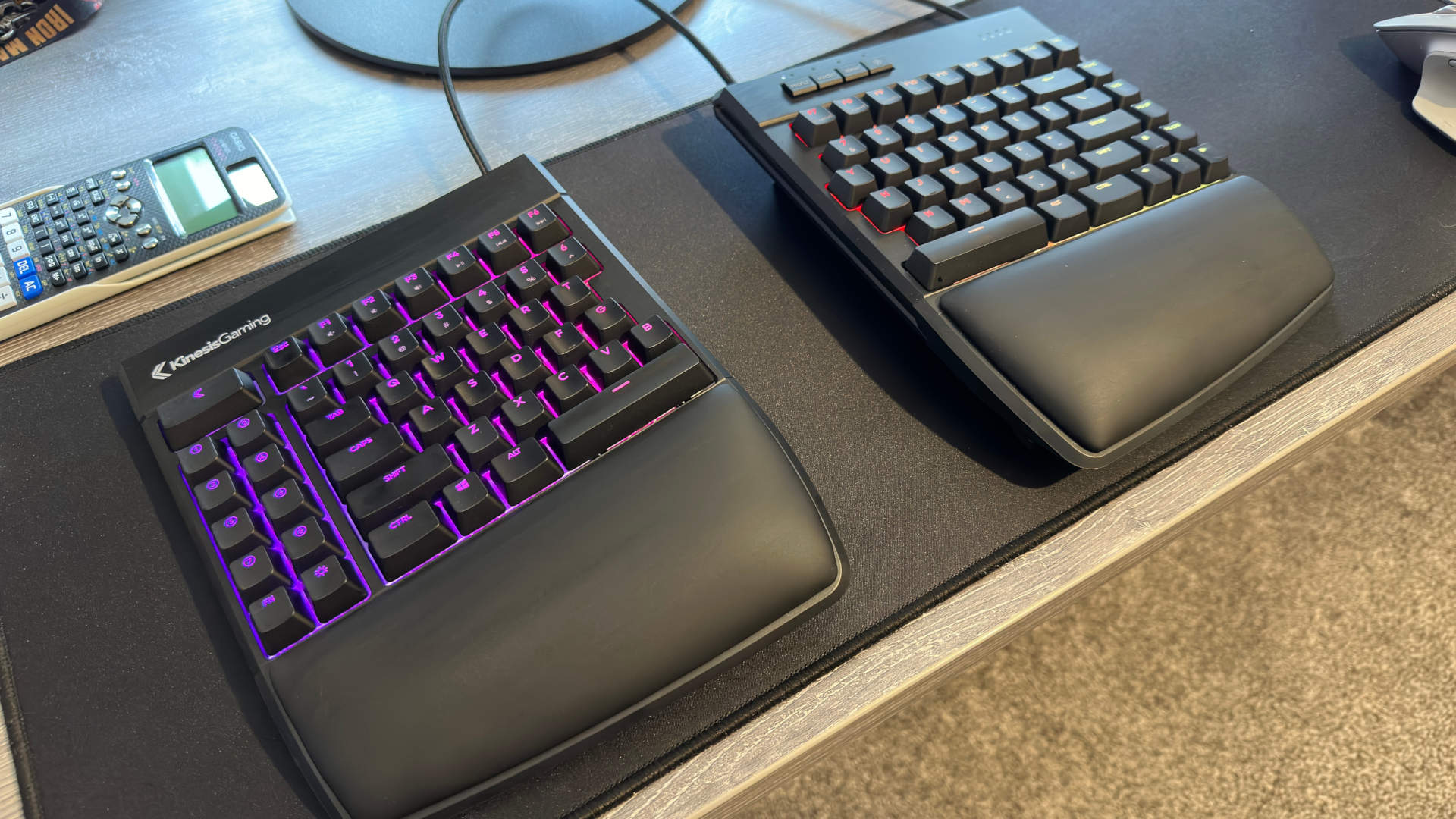
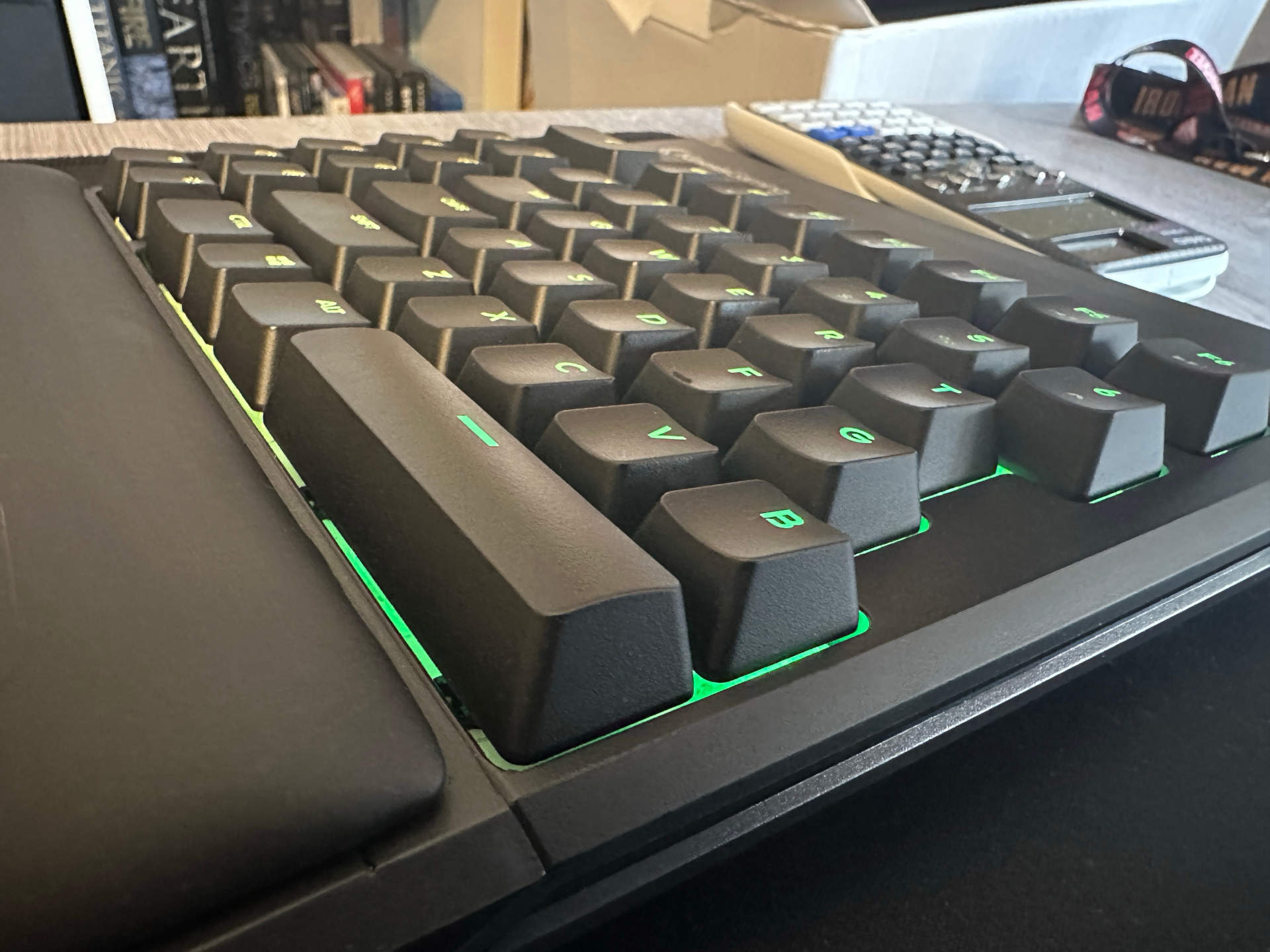


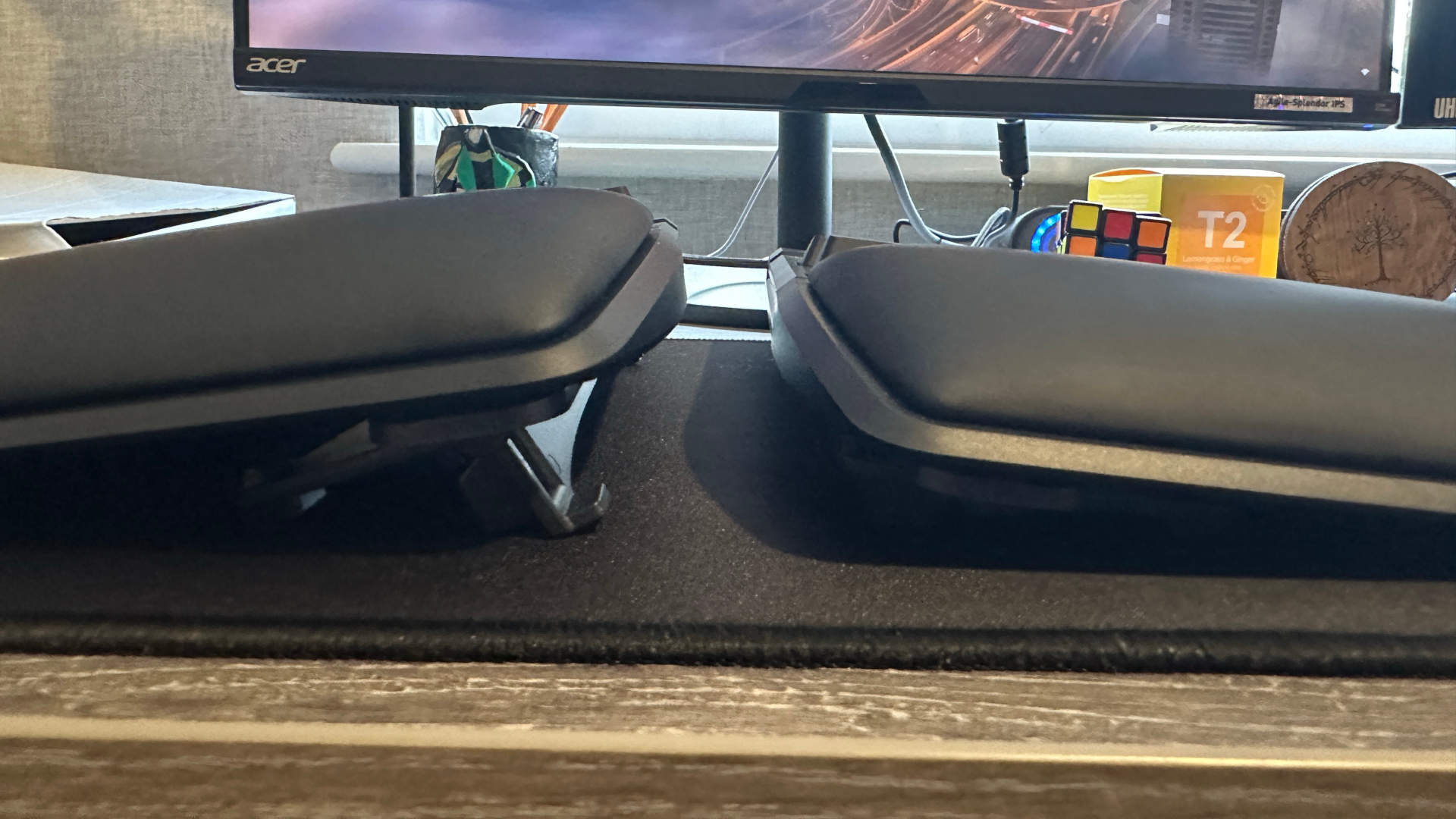

Specifications
Reasons to buy
Reasons to avoid
✅ You want the best ergonomic gaming experience: You'll find more ergonomic keyboards, and more gaming ones too, but you'll not find a keyboard that blends the two worlds quite as well as this one.
❌ You're on a tight budget: Ergo boards aren't known for being cheap, and this gaming-specific one requires the extra $30 lift kit to unlock its full potential.
The Kinesis Freestyle Edge RGB has been specifically designed to blend the best of ergonomic and gaming keyboards, which is why it ranks as our pick for the best ergonomic gaming keyboard overall.
The most striking feature of the Kinesis has to be its split design. A single cable connects the two halves, and this offers you the freedom to shift it into a position that's more comfortable long-term. The best practice is to loosely keep both halves in front of your hands without having to turn in at all at the elbows. Not only is this good for your wrists, but it's good for your arms and shoulders, too.
The split design does mean you need to be pretty comfortable typing with both hands across both halves. No problem for touch typists or anyone who glues their index fingers to F and J, but if you tend to stab from the centre, it can take a bit of adjustment. Compared to some ergo boards, this layout isn't too taxing, at least.
The wrist rests are built into each half of the Freestyle Edge RGB, and they're plenty plush for long-term gaming or typing. Though if they're not to your liking, you can detach them and replace them with something more your speed. What's a bit of a surprise is that the Kinesis doesn't come with a lift kit included in the box; it's sold separately. That means you're a bit more limited in adjustments you can make to the Kinesis compared to some ergo boards. Still, it does make up for it with some excellent gaming-specific features.
Cherry MX mechanical switches mean this ergo keyboard isn't a slouch for gaming, and of course, there's fully adjustable RGB lighting on a per-key basis.
All in all, the Kinesis Freestyle Edge RGB is a seriously good ergonomic gaming keyboard and one that shouldn't be glossed over, even if you were originally thinking of a more standard layout. Ergo keyboards are legion at this point, but the Kinesis Freestyle Edge RGB is the best we've tested to date.
Read our full Kinesis Freestyle Edge RGB review.
The best membrane gaming keyboard

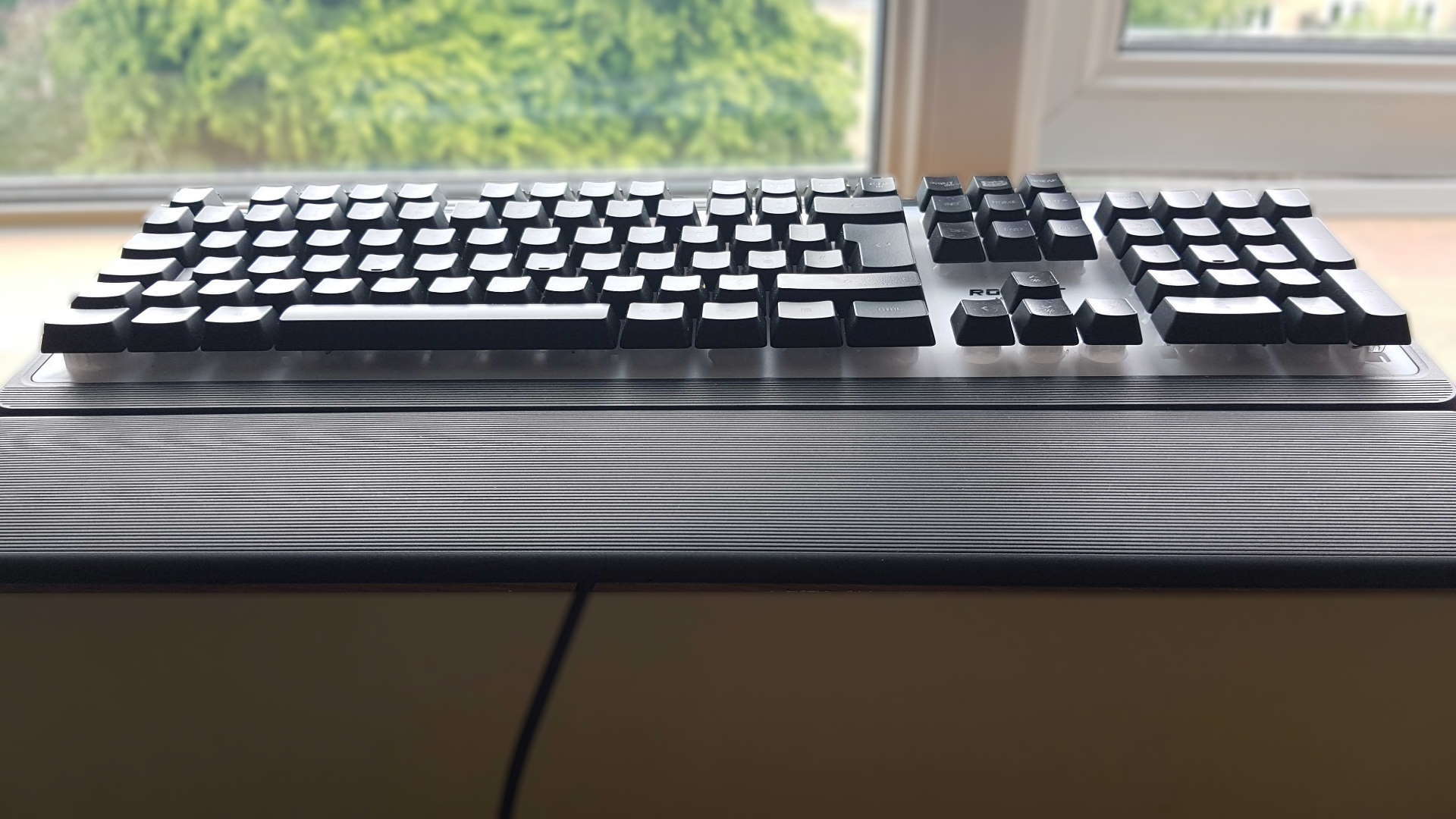

Specifications
Reasons to buy
Reasons to avoid
✅ You want RGB to the max: This keyboard makes up for its lack of per-key RGB backlighting with its illuminable entire top plate.
❌ You want sturdiness: The Roccat Magma has some flex to it and doesn't share some mechanical keyboards' heft.
The Roccat Magma is the best membrane gaming keyboard, which might sound like an oxymoron to some of us in 2025, but there really are reasons to prefer a rubber dome to a mechanical switch. Not for everyone, sure, but for some, membrane keyboards are where it's at.
For one, membranes offer a softer sound and feel than mechanical keyboards. There's a certain soft appeal to them of a kind that even a super-light mechanical keyboard will struggle to replicate, and which membrane enthusiasts will swear is definitely not "mushy".
They also tend to be much more dust- and water-resistant than mechs, and—here's the big one—usually cost a fair amount less than them, too. And if you're not enamoured by the feel of a mechanical switch under your fingertips, this Roccat Magma is well worth a look because of just how much value it offers, considering the low cost.
In her review, Katie found the Magma to offer a surprisingly tactile experience, with its keys offering great feedback and actuation while remaining soft and silent (another benefit of membrane keyboards). It also offers 26-key rollover and anti-ghosting functionality, which is ideal for gaming.
Then there are the aesthetic considerations, and those can't be overlooked with this keyboard. That's because while you're not getting per-key RGB lighting, you are getting an illuminable top plate surrounding those keys, which looks stunning and aids it with that '80s neon aesthetic. It comes with a wrist rest, too, which is great considering the low price tag.
It's not as sturdy as the usual weighted modern mechanical keyboard, and its RGB lighting can show up dust quite easily, but apart from that, it's a great piece of kit that's easy on the wallet and offers a feel and aesthetic that's just not on offer from mechanical keyboards. If membrane keys are tempting you, the Roccat Magma's where it's at.
Read our full Roccat Magma review.
Also tested
Be Quiet! Dark Mount gaming keyboard
Wonderfully constructed, with a great sound and gorgeous RGB, the Dark Mount is a lovely but expensive keyboard that isn't quite as gaming-focused as we'd like.
PC Gamer score: 89%
Read our full Be Quiet! Dark Mount gaming keyboard review.
Cherry Xtrfy K4V2 TKL
Cherry's K4V2 TKL has a nice retro look and fast actuation, but poor lighting controls, wobbly keys, and strange spacing.
PC Gamer score: 63%
Read our full Cherry Xtrfy K4V2 TKL review .
Cherry MX 8.2 TKL Wireless XAGA
A compact build with great connectivity and nice switches, the MX 8.2 tops that all off with great battery life. It is a tad expensive, though, and its software is limited.
PC Gamer score: 75%
Read our full Cherry MX 8.2 TKL Wireless XAGA review.
Corsair K70 Pro TKL
Quieter clacking alongside a rich, customisable feature set makes this a slightly more affordable alternative to the Corsair K70 Max. It's comparatively compact to boot, though still chunky for a tenkeyless design.
PC Gamer score: 83%
Read our full Corsair K70 Pro TKL review.
Lemokey L5 HE 8K
As an advertisement for what Hall effect switches can do, the Lemokey L5 HE 8K is a good one. Happily, it’s also an excellent keyboard in itself and capable of making a glorious racket.
PC Gamer score: 87%
Read our full Lemokey L5 HE 8K review.
Ducky One X
The OneX has the feel of any Ducky gaming keyboard. That's the good news. The bad news is that Ducky needs to make big improvements to its software to make the most of the induction switches in this keyboard, which are easily knocked loose and lack spares.
PC Gamer score: 60%
Read our full Ducky One X review.
Gamakay TK101
A middling mechanical keyboard that cuts a few corners in terms of build quality and battery life, but offers a decent typing experience and connectivity choices.
PC Gamer score: 64%
Read our full Gamakay TK101 review.
Razer BlackWidow V4 Pro 75%
This board offers a phenomenal experience for gamers and typists alike and comes packed with some welcome extras. But $300 is a steep price to pay, while its 75% layout won't be for everyone.
PC Gamer score: 77%
Read our full Razer BlackWidow V4 Pro 75% review.
Keychron Q5 HE
The Keychron Q5 HE is a brilliant mechanical keyboard with lots of power, a stylish chassis and thoughtful touches elsewhere.
PC Gamer score: 82%
Read or full Keychron Q5 HE review.
NZXT Function Elite MiniTKL
A compact board that doesn't sacrifice too many switches for its small size. The software makes sense, it looks good with some clever RGB placement, but it ultimately costs more than the competition for similar features.
PC Gamer score: 77%
Read our full NZXT Function Elite MiniTKL review.
Logitech G Pro X TKL Rapid
The Logitech G Pro X TKL Rapid is Logi's first attempt at rapid trigger and, despite being a bit loud and a bit niche, it's as solid as its aluminium front plate.
PC Gamer score: 86%
Read our full Logitech G Pro X TKL Rapid review.
SteelSeries Apex Pro TKL Gen 3
With rapid trigger an OLED screen up the top right, this keyboard is a bit over the top for many, but still comfortable to type on and excellent for gaming.
PC Gamer score: 82%
Read our full SteelSeries Apex Pro TKL Gen 3 review.
Corsair K70 Core
Affordable and lovely to use, only a few rough edges in the design and components stop this Corsair keeb from being a winner.
PC Gamer score: 83%
Read our full Corsair K70 Core review.
Wooting 80HE
The Wooting 80HE makes for a capable gaming keyboard with lots of power and a meaner look, although at the expense of a chassis with some flex.
PC Gamer score: 78%
Read our full Wooting 80HE review.
Keychron Q5 HE
The Keychron Q5 HE is a brilliant mechanical keyboard with lots of power, a stylish chassis and thoughtful touches elsewhere.
PC Gamer score: 82%
Read our full Keychron Q5 HE review.
Lemokey L4
The L4 is the slightly less specced brother to the Keychron Q3 Max, and at the same price, is a bit of an odd recommendation. Make no bones about it, this is a gorgeous keyboard that's packed to the rafters with features, but the Max is better.
PC Gamer score: 85%
Read our full Lemokey L4 review.
Glorious GMMK 3 HE
The standard GMMK 3 HE is merely the starting point for keyboards to come, but it's too plastic-y for my liking, particularly given the asking price. The customisation options are immense, however, and the end results can be magnificent.
PC gamer score: 73%
Read our full Glorious GMMK 3 HE review.
Endgame Gear KB65HE
A fantastic gaming keyboard for the price with powerful and snappy switches, as well as one of the sturdiest chassis available at this level, and some lightweight software that offers good customisation. Other options may look better, but the KB65HE beats them with its power.
PC Gamer score: 88%
Read our full Endgame Gear KB65HE review.
G. Skill KM250 RGB
This was our previous pick for the best budget gaming keyboard, but the NS68 offers a bit more for the price. Nevertheless, the MK250 RGB is a cracking little keyboard and is well worth its low cost.
PC Gamer score: 90%
Read our full G. Skill KM250 RGB review.
Alienware Pro Wireless
Stunning RGB and a refreshingly old-school feel matched with modern looks—there's a lot to like about the Wireless Pro. It's pricey though, and faces some tough competition for the cash.
PC Gamer score: 84%
Read our full Alienware Pro Wireless review.
Logitech Pro X 60
It's as fast as you like, this esports keeb, but also a noisy beast. It's very well-made, but there are more civilised keyboards available for less.
PC Gamer score: 77%
Read our full Logitech Pro X 60 review.
Razer BlackWidow V4 75%
A great way into hot-swappable keyboards, the BlackWidow V4 75% is just pipped to the top spots by other keebs we found more exciting for the cash.
PC Gamer score: 75%
Read our full Razer BlackWidow V4 review.
Asus ROG Azoth
The Azoth is a mighty high-end gaming keyboard in a miniature package. It's wonderful and used to rank in this guide, though we think the Q3 Max from Keychron just about does it better sans screen.
PC Gamer score: 90%
Read our full Asus ROG Azoth review.
Corsair K65 Plus
Corsair hasn't skimped out with the K65 Plus, covering all the basics you'd want from a compact keyboard of that price, and topping it with a great battery life. The company assumes non-linear switch likers already have key switches ready to swap out, though, offering zero alternatives to its own linear reds with the base model.
PC Gamer score: 88%
Read our full Corsair K65 Plus review.
Das Keyboard 6 Professional
A sublime mechanical keyboard that nails the basics, with thoughtful physical touches and a comfortable, tactile typing experience. The Das Keyboard 6 Professional looks smart and feels fantastic, even if it lacks any software.
PC Gamer score: 90%
Read our full Das Keyboard 6 Professional review.
Razer Huntsman V3 Pro TKL
There are a lot of impressive TKL keyboards on the market today. The Razer is one of them, if only beaten out by the Q3 Max for the money.
PC Gamer score: 85%
Read our full Razer Huntsman V3 Pro TKL review.
Cherry Xtrfy K5V2
Cherry's new switch is a marked improvement over its extremely popular and widespread predecessor, and the Xtrfy K5V2 keyboard is a lavishly lit and sturdy home for them. Though there are nicer feeling, and cheaper, compact keyboards on the market.
PC Gamer score: 71%
Read our full Cherry Xtrfy K5V2 review.
Logitech G915 X Lightspeed
The Logitech G915 X Lightspeed is a pretty nice gaming keyboard, with low latency play and good battery life, but it's let down significantly by its price and Logitech's software
PC Gamer score: 70%
Read our full Logitech G915 X Lightspeed review.
How we test gaming keyboards
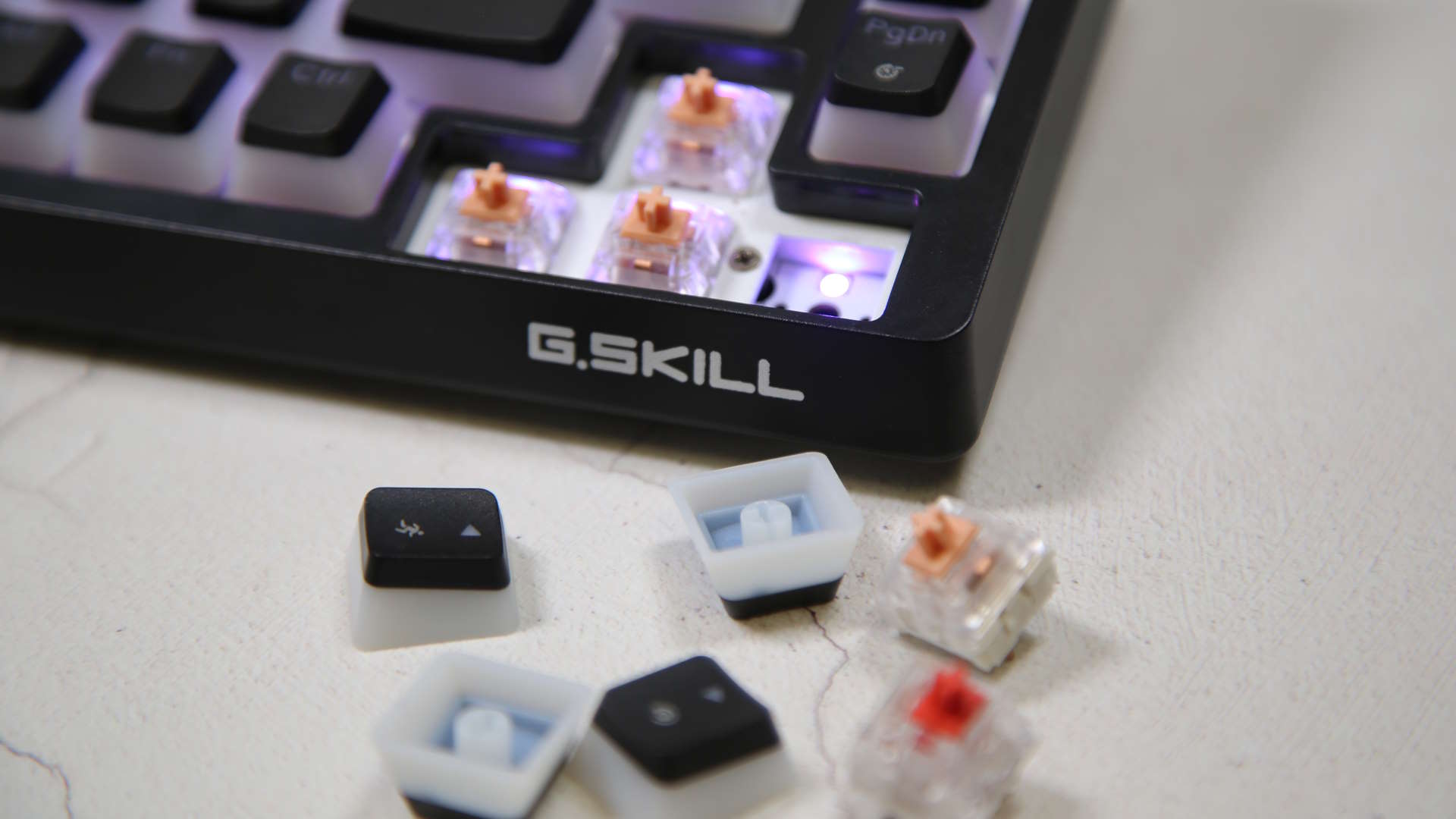
We've years of experience testing gaming keyboards on team. Each and every keyboard included in this guide has been reviewed by a professional. To do that, we use the keyboard extensively during the test period, inspect the switches, utilize the software, and use any special features the keyboard may have.
A big part of a keyboard's quality is how it feels to type on, and that comes down to the key switches. Are they sticky? Are they smooth? Do they feel like they're filled with sand? Have they been lubed? There are a lot of variables for just the key switches alone. We know what is best for gaming and typing, and what definitely isn't.
As for the keyboard, the layout can be a sticking point for some, as well as where the media keys are placed. Even the typeface is a key point of contention for these boards, and we do judge them on every aspect to make sure we've picked the best for your money.
How to spot the best deal
Where are the best gaming keyboard deals?
In the US:
Amazon - Savings on PC gaming peripheralsWalmart - Still some good savings on Razer mice and keyboards
Best Buy - Up to $105 off your next mechanical keyboard
Target - Budget gaming keyboards up to $40 offStaples - Discounts on Microsoft ergonomic and gaming keyboards
Drop - Save up to 35% on enthusiast keyboards
In the UK:
Amazon - Mechanical gaming keyboards down to half price
Ebuyer - Big savings on Logitech keyboards
Box - Save up to £60 on wireless keyboards
Argos - Decent prices on budget to high-end keyboards
What is the big deal with mechanical switches?
We can talk for hours about the feel of mechanical switches versus membrane switches, but ultimately that's a personal choice. What makes mechanical switches objectively superior, however, is their far-extended life span. They can take far more punishment and keep responding long after a membrane switch has collapsed in on itself.
Why do gamers use 60% keyboards?
The main reason gamers will use compact 60% keyboards is because the smaller form factor allows for more space for your gaming mouse. That means you can have to DPI levels in your mouse lower, offering greater accuracy but also necessitating wider sweeping movements.
It also means that your hands resting on the WSAD keys and the mouse are closer together, which in turn improves the ergonomic posture, either when gaming or simply using your computer.
What is the most important thing to look for in a mechanical gaming keyboard?
The switch type is arguably the most important choice to make when picking your new gaming keyboard. Cherry mechanical switches are the most common and most recognizable, but there are a host of alternatives on offer, as well as a bunch of upmarket, specialist switches to choose from.
Are dedicated media controls a deal-breaker?
Only you can make that call, but we would suggest that at least having the option to toggle the top row between function and media controls would be our choice. Having a discrete volume wheel can be super useful, however.
What size of keyboard do I need?
Keyboard size is absolutely a defining factor. Full-sized keyboards tend to offer the most features and a Numpad, but if you don't have space, then all of those extras you paid for will be useless. Tenkeyless boards (the ones with no number pad) and compact keyboards can be a great option, too, if you don't care about all the extra bells and whistles or you don't have any use for alt codes (how barbaric!).
Jargon buster
Actuation Point
The height to which a key needs to be pressed before it actuates and sends an input signal to a device.
Clicky
A switch that delivers an audible click every time it's pressed, generally right around the point of actuation.
Debounce
A technique to ensure that only one input registers every time a key is pressed.
Housing
The shell that surrounds the internal components of a switch.
Hysteresis
The result of the actuation point and reset point in a switch being misaligned. This generally means a key needs to be lifted off further than normal before it can be actuated again.
Linear
A switch that moves directly up and down, generally delivering smooth keystrokes without noise or tactile feedback.
Mechanical Keyboard
A keyboard built around individual switches for each key rather than a membrane sheath mounted on a PCB.
Membrane Keyboard
A keyboard on which all the keycaps are mounted on a membrane sheath; when a key is pressed, a rubber dome depresses and pushes against the sheath and PCB beneath, actuating the key.
Stem
The component of a switch on which the keycaps are mounted on a mechanical keyboard.
Switch
The physical component of a mechanical keyboard beneath the keycaps on a mechanical keyboard. The switch determines how a key is actuated, whether or not it provides audible or tactile feedback with each press, and more.
Optical switch
This is a type of mechanical switch which instead of a physical metal contact switch uses light to measure when actuation takes place. These can be more configurable too, allowing for not just off and on states, but more analog designs, and even dual actions for a single key depending on how far the switch is pressed down.
Tactile
A switch that provides a 'bump' of feedback every time it's pushed.
Tenkeyless (TKL)
A keyboard that lacks the right-hand number pad.
Keep up to date with the most important stories and the best deals, as picked by the PC Gamer team.

Jacob earned his first byline writing for his own tech blog. From there, he graduated to professionally breaking things as hardware writer at PCGamesN, and would go on to run the team as hardware editor. He joined PC Gamer's top staff as senior hardware editor before becoming managing editor of the hardware team, and you'll now find him reporting on the latest developments in the technology and gaming industries and testing the newest PC components.
- Andy EdserHardware Writer
- Reece BithreyContributor
- Dave JamesEditor-in-Chief, Hardware
